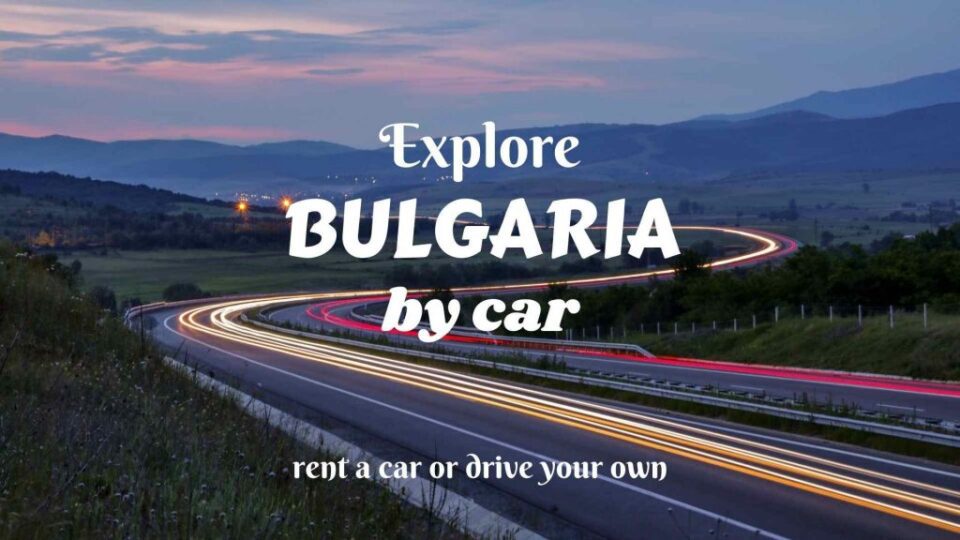In the northeastern part of the Balkan Peninsula lies a unique country with a rich history and picturesque landscapes — Bulgaria. Wide sandy beaches with bays and steep cliffs, massive high mountains, limestone rocks, mysterious caves, beautiful river valleys, dense forests inhabited by lynxes, bears, and rare birds.
Independent tourists who prefer to enjoy all the advantages of unrestricted travel without time and distance limitations can explore interesting places by car. Let’s discuss where to rent a car in Bulgaria affordably and conveniently.
Average Budget for Trips to Interesting Places
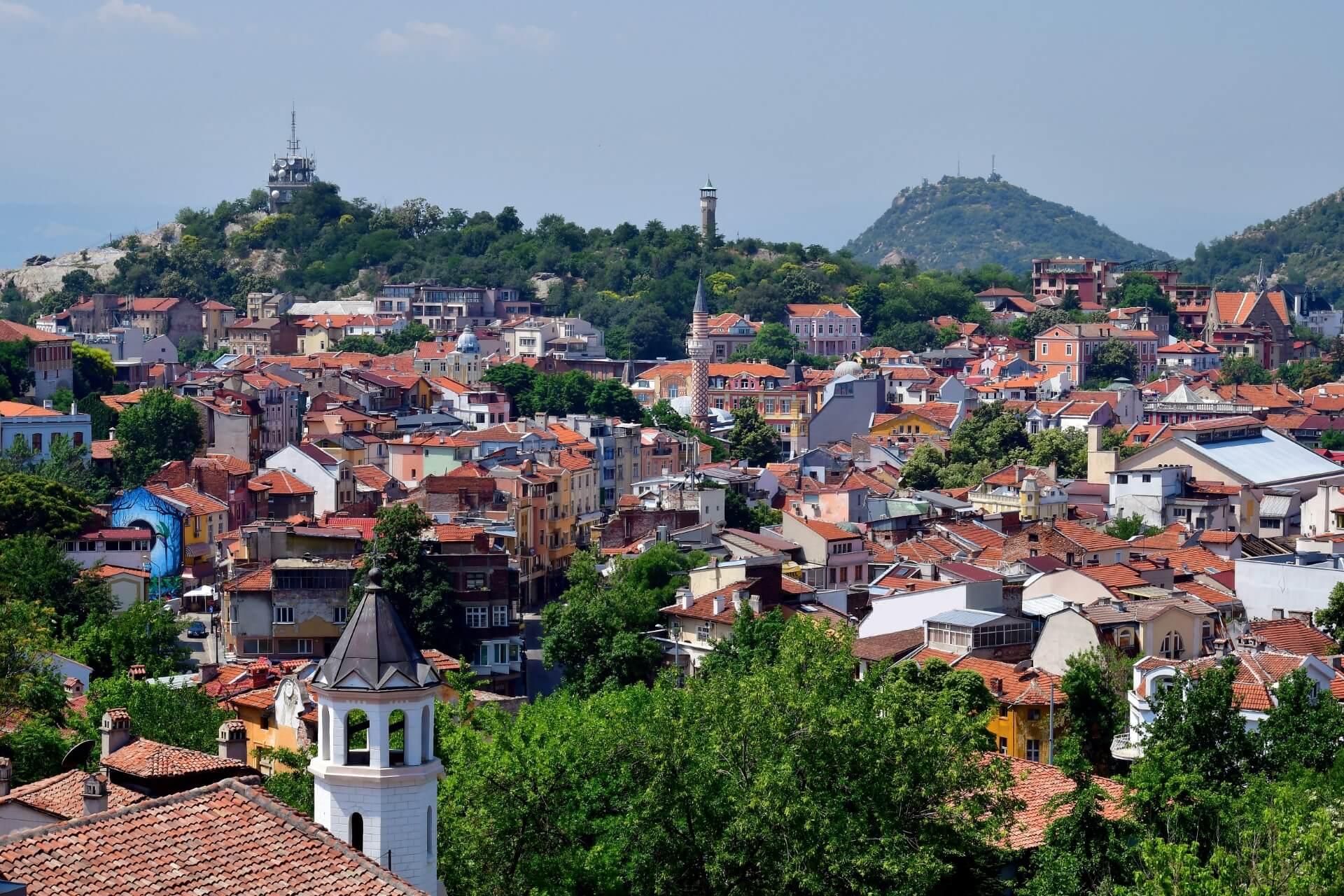
An essential part of any trip is planning the travel budget and creating a program for visiting significant sites. Traveling by car makes it easier and more accessible for tourists to go anywhere in the country without being restricted by public transportation schedules.
Considering the route distances, fuel costs, car rental prices, and associated expenses for food and sightseeing, it’s important to estimate the approximate costs of an independent trip. Often, an individual tour is cheaper than an organized excursion. For example, let’s look at the average budget for trips on several popular routes.
Varna — Balchik — Cape Kaliakra
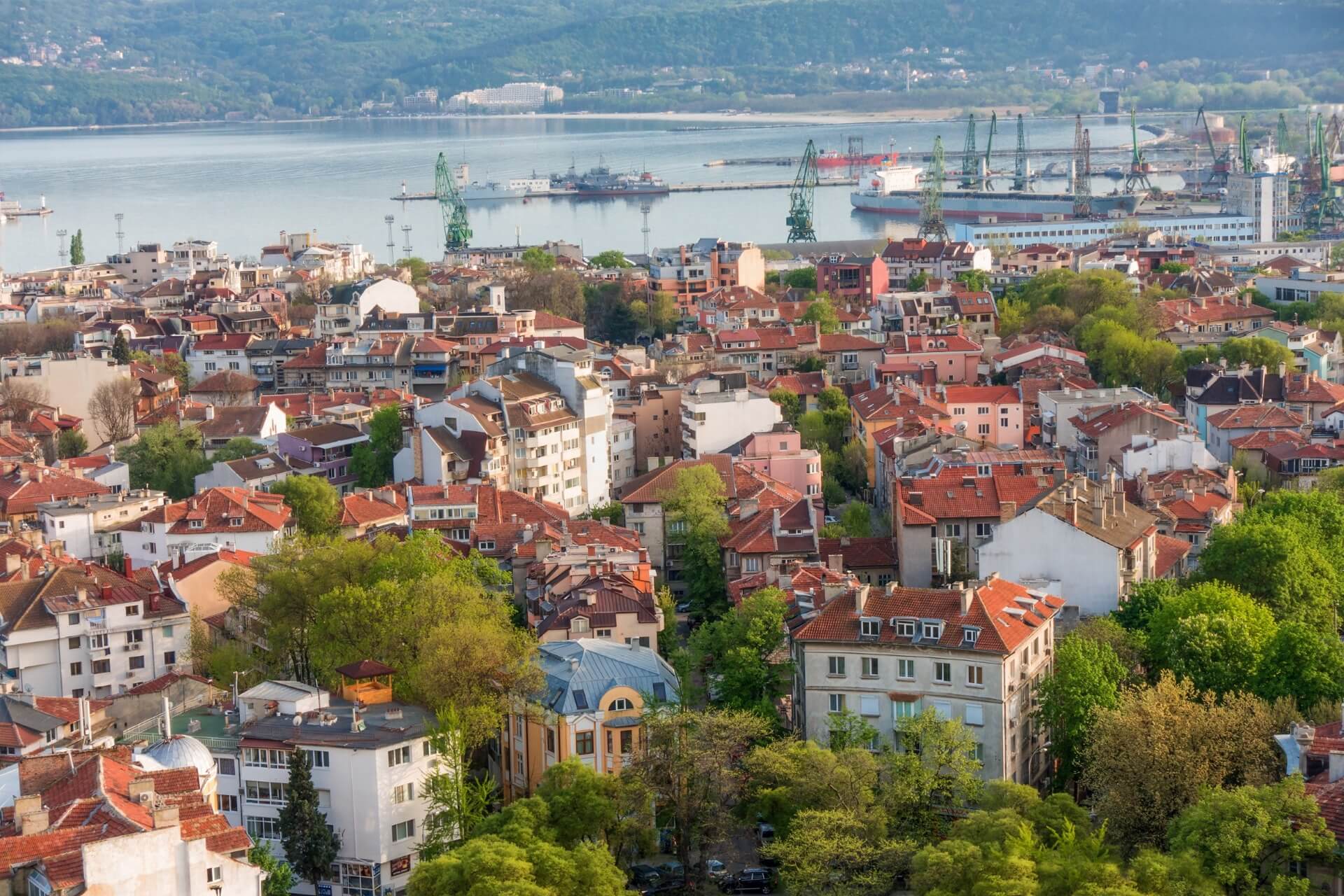
The resort capital is the port city on the Black Sea coast — Varna. A two-hour walk is enough to visit the significant places here. This includes the Assumption Cathedral, Seaside Park, Aladzha Monastery, and famous archaeological ruins — the Roman Baths. 43 kilometers from Varna is a quiet and peaceful place where the resort town of Balchik is located among green forests and white cliffs. The luxurious botanical garden here, spread over 35 hectares of land, is particularly popular.
After a pleasant walk in the fragrant park, you can head to Cape Kaliakra. This picturesque rocky line stretches into the sea for two kilometers, offering a scenic view of the bay. The total distance of the route is 75 km. The costs for the trip are presented in the table.
| Item | Cost |
|---|---|
| Car rental | 45 euros |
| Fuel | 14 euros |
| Food | 10-12 euros per person |
| Sightseeing (Roman Baths, Botanical Garden) | 7 euros |
As a result, the total cost for a family of three will be about 228 euros.
Varna — Stone Forest — Madara — Veliko Tarnovo — Shipka
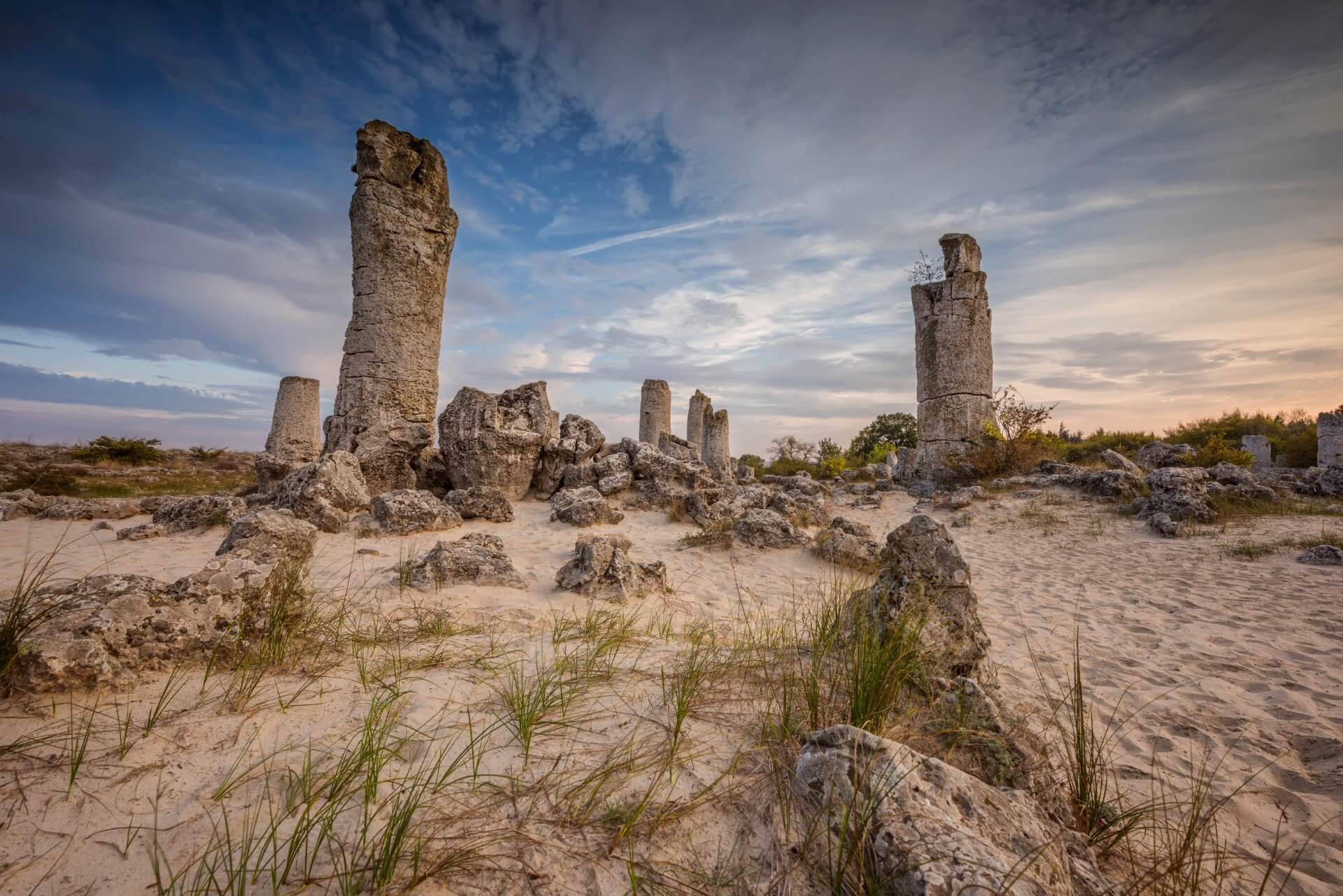
A route over 300 km long involves a two-day trip from coastal areas to the northeast of the country. 75 kilometers from the port city of Varna is the national historical and archaeological forest reserve “Madara”.
The park is located on the slopes of majestic cliffs, on top of which lie the ruins of an ancient fortress. On the way to the reserve, be sure to stop by the “Stone Forest” valley (18 km from Varna) to admire the natural phenomenon of towering giant stone columns.
The next point of visit is Veliko Tarnovo. It is located 220 kilometers from Varna. The city, built on three hills, is literally immersed in greenery.
In Veliko Tarnovo, you can stay overnight and the next day, after traveling another 47 kilometers, complete the trip at the foot of Mount Shipka. At an altitude of 1,328 meters above sea level stands a memorial tower in honor of the Russian soldiers who fought here against the Ottomans.
| Item | Cost |
|---|---|
| Car rental (2 days) | 90 euros |
| Fuel | 60 euros |
| Food | 10-12 euros per person |
| Sightseeing (Madara Fortress) | 3.07 euros |
| Overnight stay in Veliko Tarnovo | 22 euros |
The average cost of this exciting trip for a family of three will be about 245 euros.
Sofia — Rila Reserve
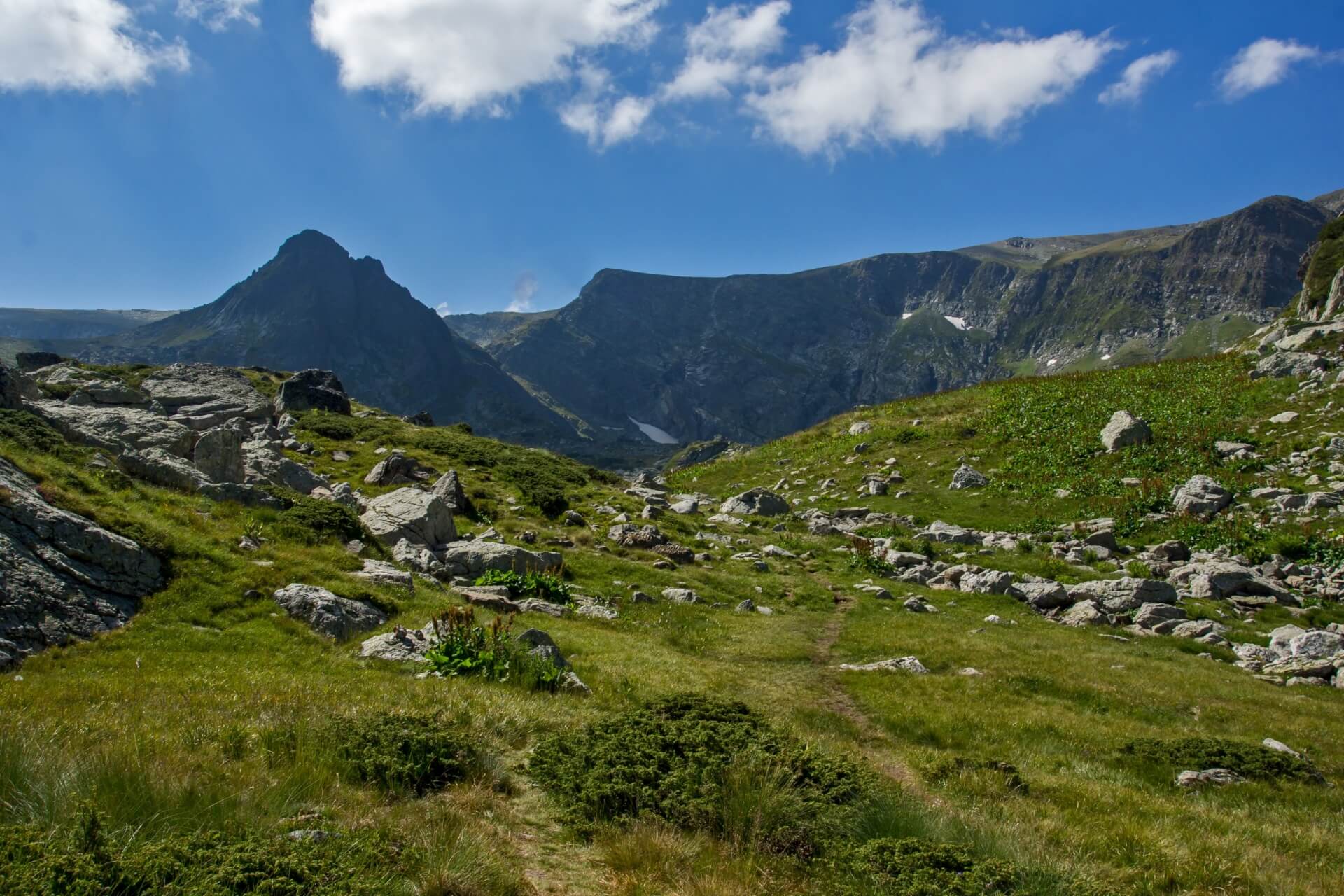
Sofia is located in the west of the country among picturesque mountain ranges. True travel lovers are attracted to the city by its centuries-old history, as evidenced by the abundance of Byzantine and Muslim buildings, as well as monumental architectural ensembles erected at the end of the 19th century.
117 kilometers from Sofia is one of the most picturesque places in the Balkan country — the Rila Reserve, which is a complex of monastic buildings surrounded by stunning natural beauty.
| Item | Cost |
|---|---|
| Car rental | 45 euros |
| Fuel | 25 euros |
| Food | 10-12 euros per person |
Considering the visit to the monastic complex, the average budget for a family trip will be 120-140 euros.
Sofia — Belogradchik
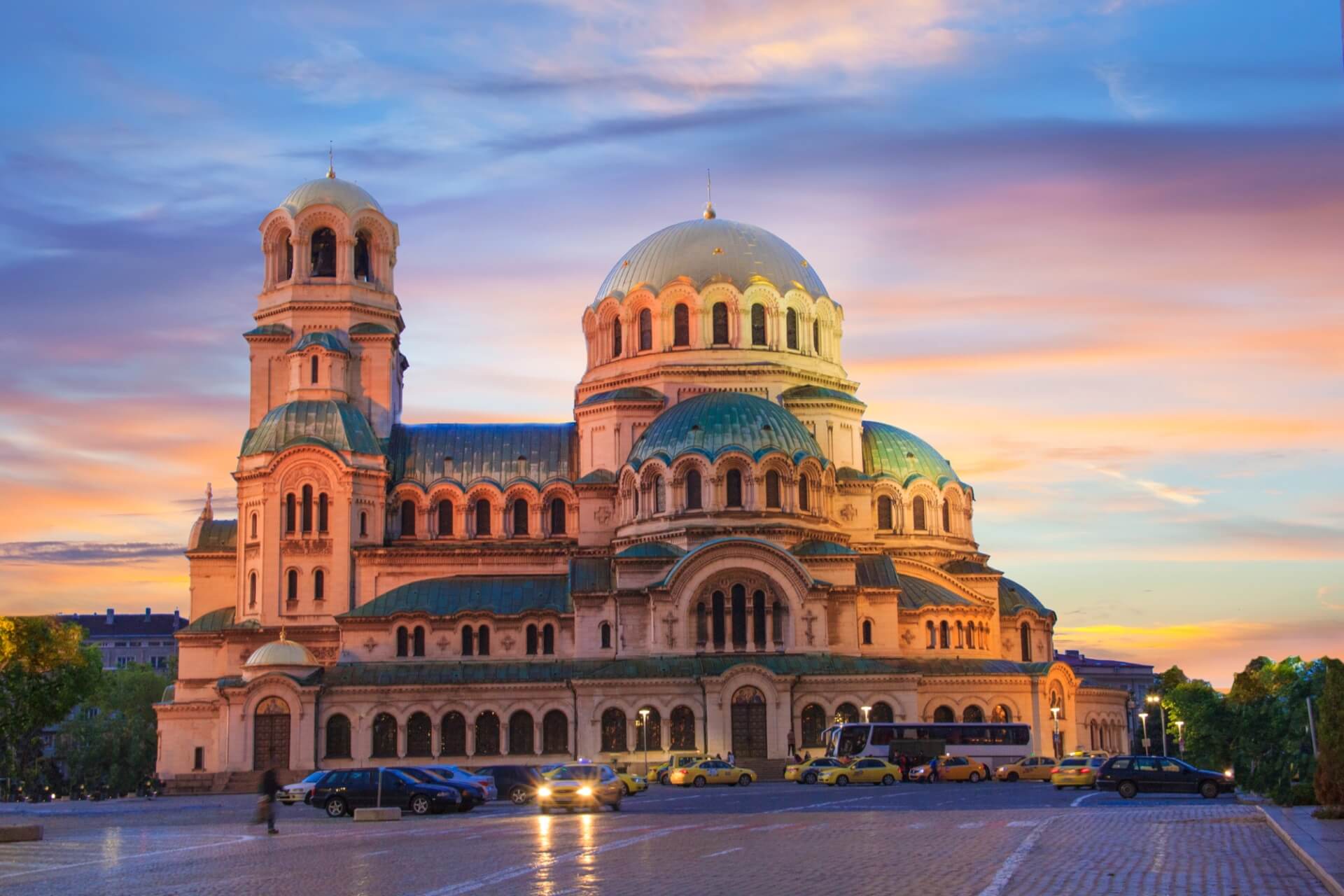
You can see the fortress built during the Roman Empire and admire the mesmerizing view of bizarre rock formations in Belogradchik. The city is located 170 km from Sofia.
| Item | Cost |
|---|---|
| Car rental | 45 euros |
| Fuel | 35 euros |
| Food | 10-12 euros per person |
A family trip will cost no more than 120 euros.
The Best Way to Travel
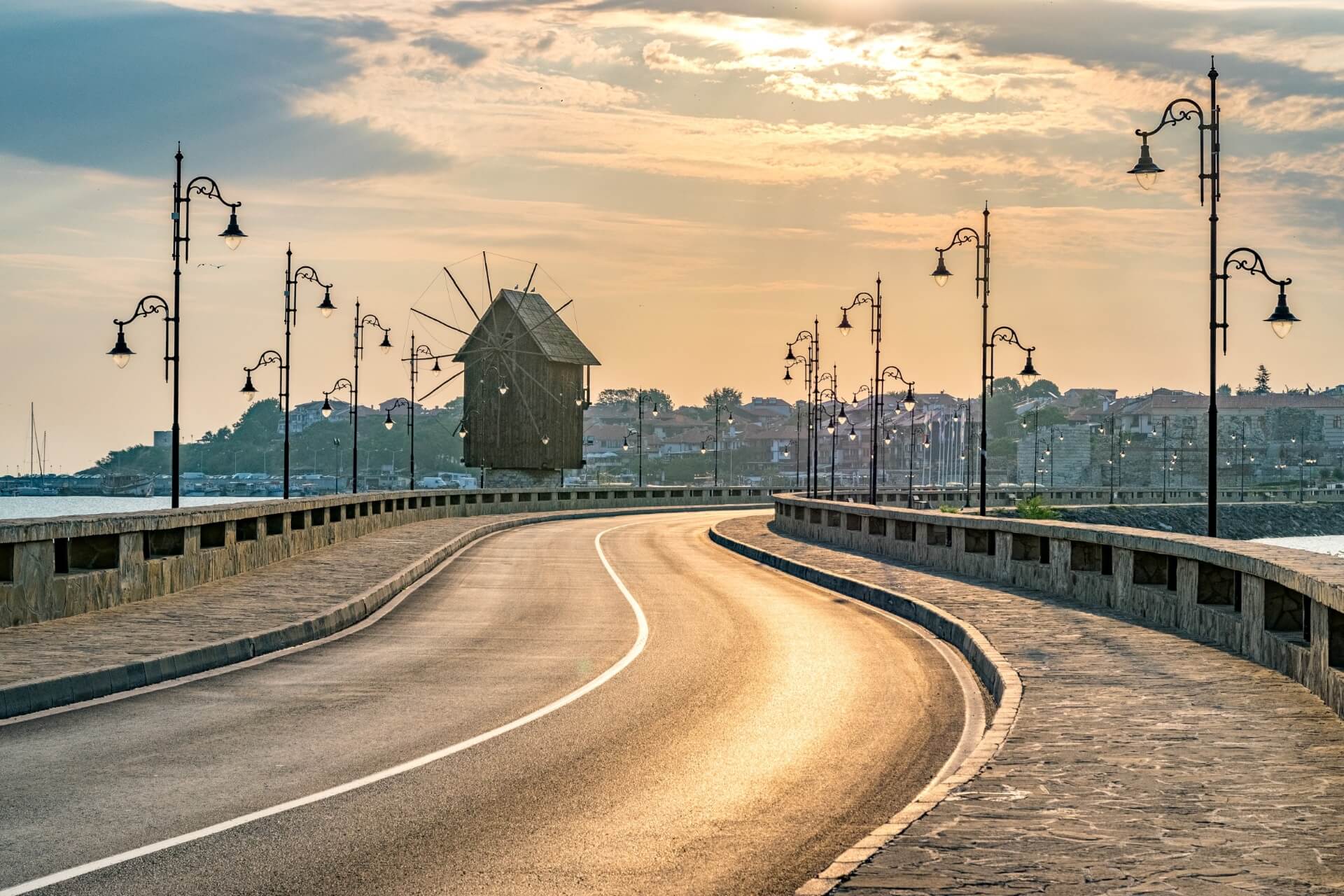
The transportation infrastructure is well developed. Rail and bus services connect the entire territory of the Balkan state. In major cities, trolleybuses, trams, and taxis operate, and in the capital Sofia, it is convenient to travel by metro.
The most budget-friendly way to travel around the country is by bus. The technical condition of the bus fleet leaves much to be desired.
Do not expect European comfort from these trips. Buses leave for long distances in the early hours. Often, the journey takes all day, and there may not be enough time to explore interesting places. Therefore, tourists have to book a hotel for an overnight stay to see the sights without rushing.
You can use organized bus tours. These are educational tours with a wide range of visits to beautiful ancient cities, where architectural objects are combined with natural attractions.
Excursion programs have become quite an expensive pleasure due to the sharp decline in the national currency exchange rate. The average price of a tour with an overnight stay is 90-110 euros, and one-day trips start from 35 euros per person.
Trips to Sofia, Plovdiv, Rupite, and visiting the Rila Monastery remain the most popular destinations for tourists after stays on the magnificent Black Sea coast. The cost of an excursion tour for a family of three will be 270-330 euros without considering food and sightseeing expenses.
You can use intercity buses, which involves studying their schedules and adhering to the timetable of the routes. The road for a family alone will cost 96 euros. This is quite economical, but it would be difficult to call such a trip easy.
The trip is tiringly long and sometimes accompanied by a lot of inconveniences. Buses run on a clear route without deviations, so acquaintance with interesting objects encountered along the way is minimized.
The most reliable and optimal option for traveling through the picturesque regions of Bulgaria is independent car tourism. This is facilitated by affordable car rental offers if you use the Localrent.com service. Renting a vehicle for two days in the peak season will cost 90 euros. Fuel costs will be 80 euros. As a result, there will be a budget saving of 80-100 euros compared to an organized excursion program.
Traveling by car will allow tourists to carry out the trip on desired routes much more comfortably. The direct A1 highway without serpentine connects the coastal areas with the rest of the country’s regions. The distance between the seaside resort of Sunny Beach and the capital Sofia is about 400 kilometers. Along the way, you can visit interesting colorful towns, make stops to admire natural landscapes, spending as much time as needed.
What Drivers Need to Know
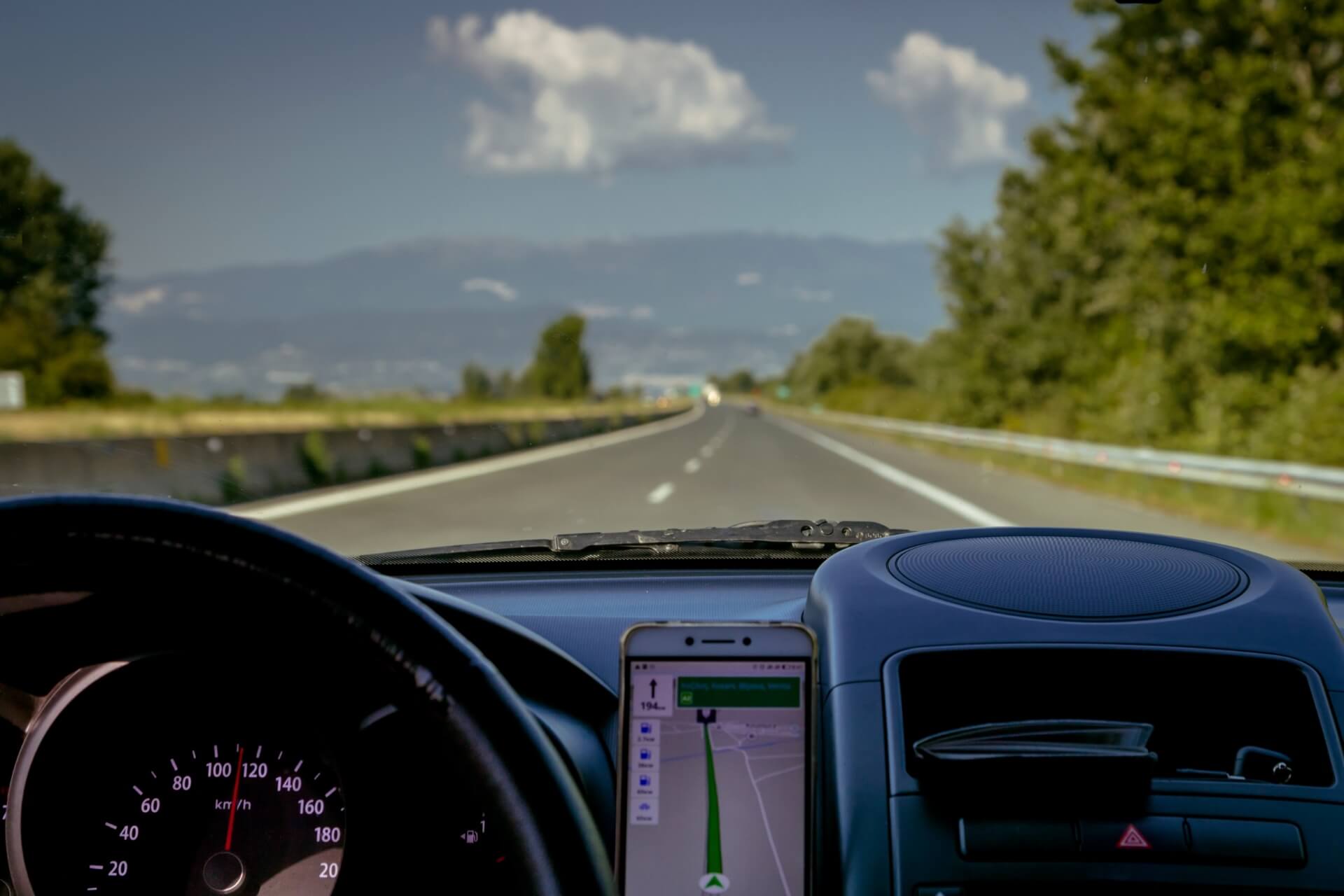
While making an exciting journey behind the wheel, tourists need to study the features of local road traffic. Compliance with all requirements is a guarantee of a safe and favorable trip.
Before the trip, tourists are advised to consider some essential details of a car journey:
- Documents
- Road Quality
- Parking
- Traffic Police
- Gas Stations
- Traffic Rules
- Mobile Internet and Communication
- Navigator
Driver’s License
To drive a car, you need an international driver’s license. According to the law, drivers are prohibited from driving vehicles without European rights. De facto, tourists are allowed to drive a car with only a national license. However, to avoid misunderstandings and unjustified fines, you should obtain an international driver’s license in advance to travel peacefully.
Road Quality
State highways connecting major cities are of high quality. These are toll and multi-lane highways with excellent coverage. Markings and road signs are quite understandable for drivers. Driving on free secondary roads can cause complications.
There are sections with poor asphalt, but potholes and bumps are rare. Moreover, such roads are typically single-lane, which causes some inconveniences during heavy traffic.
Drivers need to be more attentive and patient in case of traffic congestion, especially with heavy trucks. There are several serpentine roads in the mountain areas. You should drive carefully, observing the speed limit.
The roads pass through picturesque places. Driving along them, you can admire the magnificent nature: river valleys, gorges, passes, and forests. All serpentines are equipped with drains and nets against landslides.
Toll Roads
To travel on main roads, you need to purchase a vignette. This is a state road toll, the amount of which depends on the category of the vehicle and the duration of road use. Toll roads are marked with appropriate signs.
If tourists travel in a rented car, the vignette is already included. It must be glued in the lower corner of the windshield. The date and mark on the vignette must indicate its validity.
Paid Parking — How to Know How Much to Pay, How to Pay
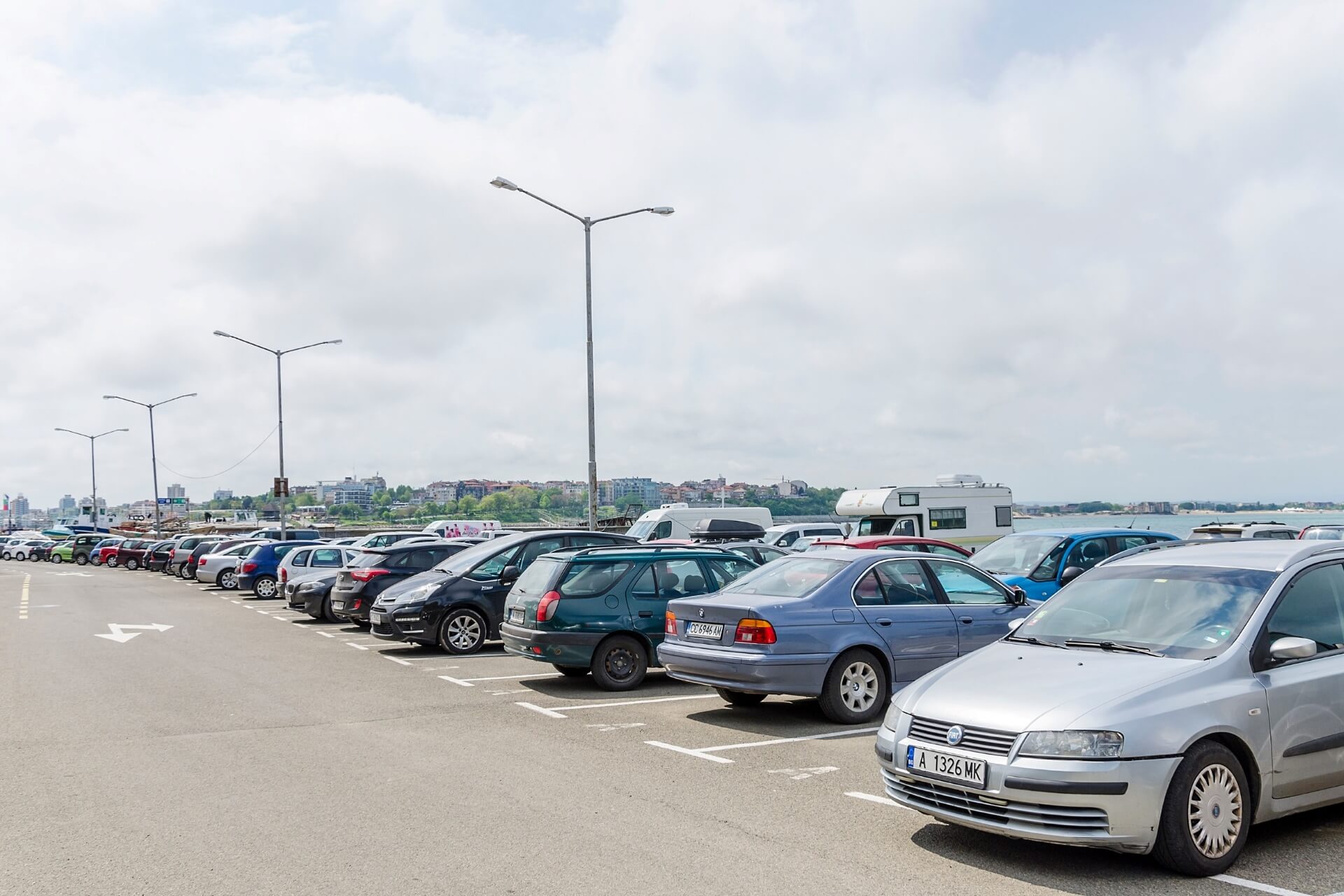
Parking should be taken with particular care. Many tourists often get into trouble due to a lack of knowledge about using parking lots. Parking zones in cities are marked with green and blue lines on the road surface, as well as identification signs that inform about the time limit for parking and the method of payment. The maximum stay of a car in the blue zone is 2 hours, and in the green zone, it is 4 hours.
You can pay for parking to a special employee in a reflective vest or by sending an SMS to the number specified on the road sign. The cost of one hour of parking is 1 euro. For violating parking rules, a fine of up to 25 euros is imposed.
Parking Payment in Sofia
Finding a free parking spot in Sofia won’t be difficult. Car tourists are offered a sufficient number of places both in the center and on the outskirts of the city. The streets of the capital fall into the blue and green parking zones, which differ in some nuances.
| Feature | Blue Zone | Green Zone |
|---|---|---|
| Duration of stay | 2 hours | 4 hours |
| Parking cost per hour | 1 euro | 0.51 euros |
| Parking hours | 8:00 to 19:00 |
Payment can be made in the following ways:
- Buy a ticket in kiosks or from controllers. You need to write the exact parking start time on the ticket.
- Send an SMS with the car registration number to the numbers 1302 (blue zone) and 1303 (green zone). It is important to wait for payment confirmation.
- Through terminals.
All detailed information about the parking spot is indicated on the respective road signs. It is essential to read them carefully. The information is written in Bulgarian, but Russian-speaking tourists won’t have difficulty understanding it.
Where You Can Park for Free
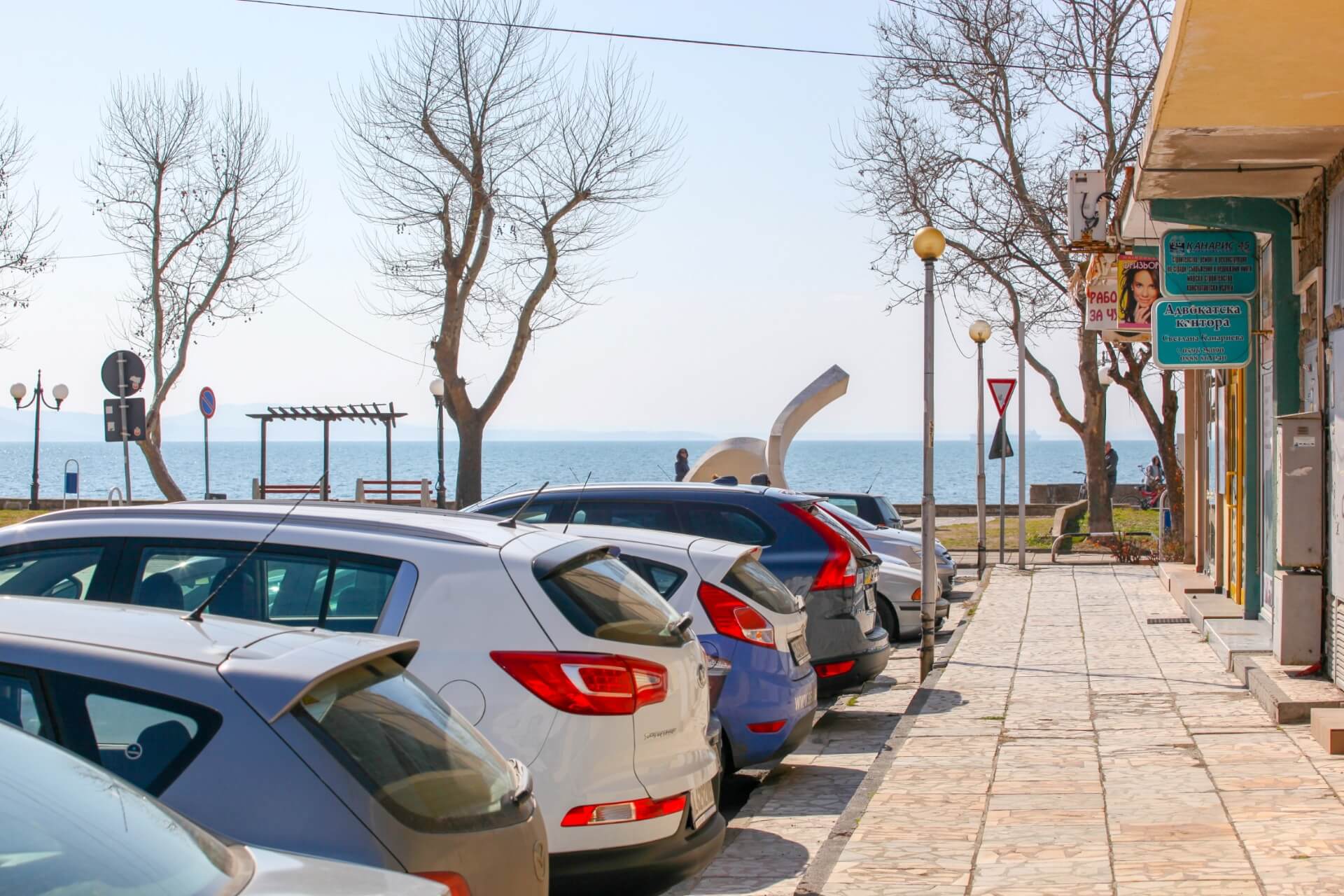
You can park for free where there are no blue or green markings and special parking signs. Free parking is provided for restaurant and hotel clients. Paid parking can be used free of charge on weekends and at night.
It is prohibited to park in the following places:
- On parking spots for disabled people. These are marked with a wheelchair symbol. Fine: 102 euros.
- In parks, on playgrounds. Fine from 25 euros.
- Near stops. Fine from 10 euros.
Traffic Police: Where They Are Most Often, What They Require, How to Behave
Law-abiding drivers are not stopped by traffic police. If you follow the traffic rules, you are unlikely to have to deal with the police. Patrols are on duty on highways, set up ambushes, and carefully monitor the traffic.
Police officers wear uniforms with reflective vests. In case of a stop by inspectors, drivers must provide a passport, a driving license, the car registration document, and an insurance policy.
The police officer must introduce himself, state his department number, and indicate the reason for the stop. The inspector has the right to check the driver for alcohol. The trunk is inspected only if there are serious grounds and a protocol is drawn up.
It is important to know that traffic police officers do not accept cash. Fines for violations are paid according to the issued receipt. It is not recommended to try to resolve misunderstandings with a bribe. This can only make the situation worse.
Speed Limits
The allowed speed limits are:
- The allowed speed in populated areas is up to 50 km/h.
- Outside the city, the maximum speed is 90 km/h.
- On highways, it is allowed to drive at a speed of 120 km/h, if indicated by signs.
There are several sections of highways where it is allowed to accelerate up to 140 km/h. These are new roads recently built or reconstructed. On the roads, you can see special devices that record the speed of the car and display it on the board. For exceeding the speed limit, penalties are inevitable.
Seat Belts
Mandatory for driving a car is the use of seat belts. In addition to the driver, all passengers traveling in the front and rear seats must be buckled. Only pregnant women are allowed to ride without seat belts.
Fines
Traffic violators are invariably subject to fines, which have significantly increased since Bulgaria joined the European Union. Traffic inspectors strictly monitor discipline on the roads. The main methods of combating violators are hidden police ambushes and the use of radars and surveillance cameras.
The most common traffic violations include:
- Exceeding the speed limit by 10 km/h results in a fine of 10 euros, by 20 km/h — 25 euros.
- Transporting children under three years old without a corresponding seat. Ignoring this rule will cost 25.57 euros.
- Neglecting seat belts. Failure to use them as intended is punishable by a fine of 25.57 euros.
- Driving with the headlights off. The penalty for this violation is 20 euros.
- Talking on a mobile phone while driving without a headset. Fine — 25.57 euros.
- Driving under the influence of alcohol. A drunk driver will be fined 500 euros for the first offense, and 2000 euros for the second. Subsequent alcohol violations will result in the revocation of the driver’s license for several years.
Fines must be paid immediately at the nearest bank branch. It is important to remember that everyone is equal before the law — dishonest tourists should not expect leniency from the police. Officers can confiscate the driver’s license in case of a serious violation.
Transporting Children
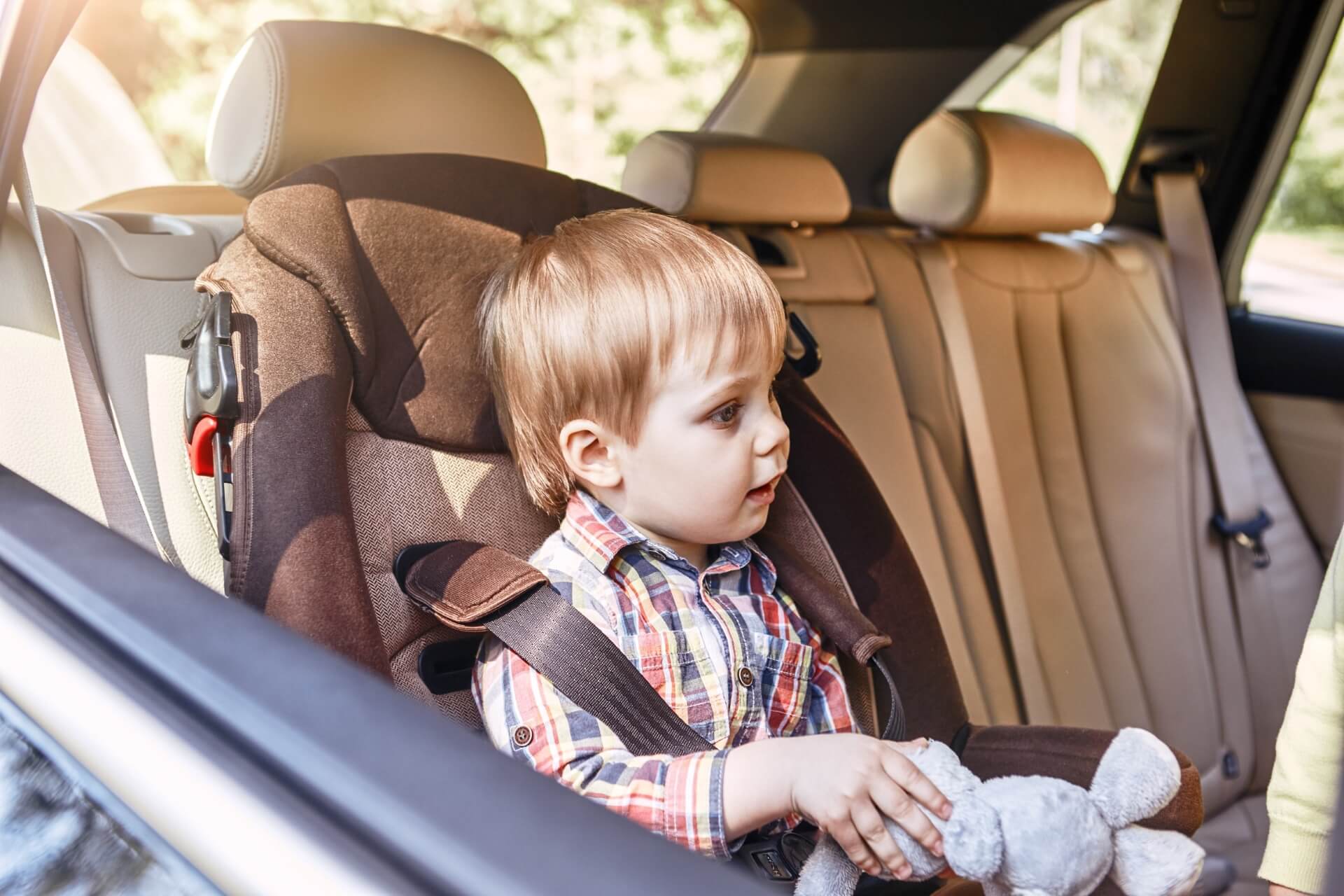
Children under 150 cm tall must sit in the back seat of the car while driving. Children under three years old travel only in special seats that correspond to the child’s weight and securely fix them for a safe trip. This is especially important when driving on winding mountain roads.
Gas Stations, Fuel Costs — Where to Refuel, Features
Gas stations are evenly distributed along the roads. They are found approximately every 40 km. There are many network fuel companies and small private gas stations both in cities and on highways. Therefore, drivers will not experience a shortage of fuel.
Compared to other EU countries, fuel costs in Bulgaria are quite acceptable:
- Kinitron 95 Plus — 1.32 euros per liter
- 95 EKONOMY — 1.27 euros per liter
- Diesel EKONOMY — 1.33 euros per liter
- Gas — 0.64 euros per liter
Gas stations operate around the clock every day. The procedure of refueling the car is carried out by the station employees. Drivers should name the fuel brand and the amount to refuel.
Traffic Rules
Familiar traffic rules apply here, which do not differ from generally accepted international standards. Tourists are strongly recommended to adhere to cultural and careful driving. Following the traffic rules is the basis of a safe trip.
The main requirements that drivers must comply with while driving:
- Drive according to traffic lights, road signs, and markings.
- Observe the speed limit. In populated areas, it is allowed to drive at a speed of up to 50 km/h, outside the city — up to 90 km/h, on highways — 120 km/h.
- Seat belts must be used by both drivers and all passengers.
- Keep the headlights on at all times in any weather.
- Do not drive under the influence of alcohol.
- The car must have a first aid kit, a fire extinguisher, a vest with reflective elements, and a warning triangle.
Mobile Communication and Internet — Operators, Prices, Tariffs
Mobile internet and cellular communication are essential helpers on a trip abroad. Tourists should take care of options to stay in touch with family and also be able to call for help if necessary. Upon arrival, it is recommended to immediately purchase a local SIM card, as European roaming is very expensive.
The following mobile operators operate in the country:
- Telenor
- Vivacom BG
- M-tel
The optimal option for travelers is the cellular operator Vivacom BG. The operator offers customers inexpensive tariffs (from 3 euros) and a stable signal in cities and popular resorts. The tariff package, valid for 20 days, includes 25 minutes of calls and high-speed internet.
Telenor offers acceptable conditions for calls to tourists, giving 30 minutes of calls for 3.5 euros, but the tariff is valid for 7 days. It should be noted that in mountainous areas, the Telenor signal is very weak.
M-tel covers the entire country with excellent quality signals, even in mountainous areas. This is a rather expensive operator — the price of a two-week package is 4.6 euros. SIM cards can be purchased in mobile communication shops. It is more convenient to top up the balance through terminals installed in many public places.
Navigator
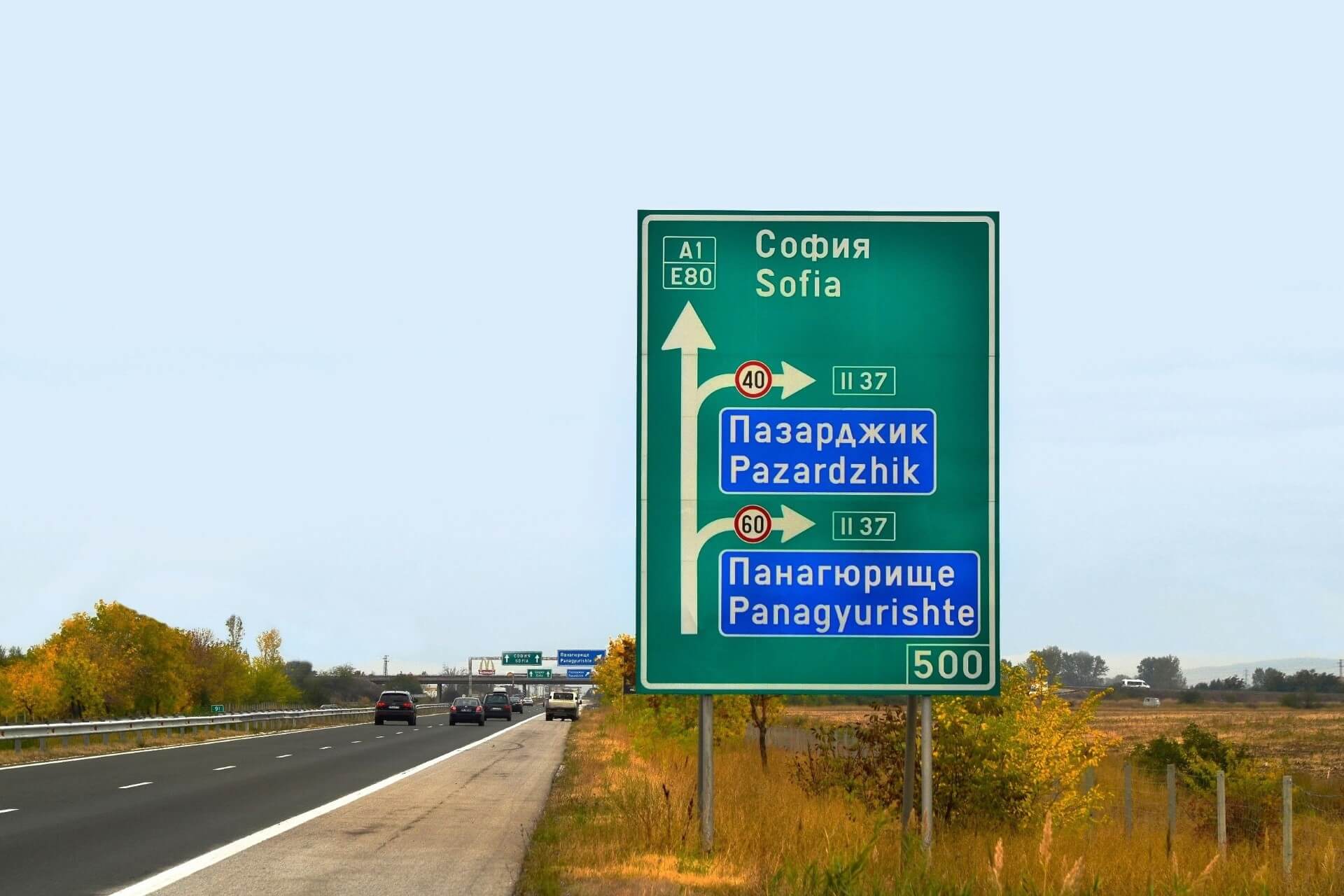
Car enthusiasts may not need a navigator. The road signs on the highways will surely guide tourists along the desired route. The information boards are equipped with understandable symbols. If you follow the coast, it is challenging to get lost. Just do not deviate from route E87 and follow the signs carefully.
Using a navigator for orientation on secondary roads is likely to lead to the device directing the driver against the main traffic flow. This will create a dangerous situation. If you can’t do without a navigator, it’s better to use free Google maps installed on your smartphone.
Should You Book Online in Advance
Independent and mobile travel can be successfully carried out using a rental car. This way of traveling will diversify the holiday and allow you to enjoy the beauty of local landscapes at any convenient time. Tourists should seriously choose a rental company since the right decision ensures a safe and comfortable trip.
Many firms actively attract customers with enticing prices, which hide a lot of additional expenses. It is recommended to rent a car in advance through the well-known online service Localrent.com, which sorts out the best offers from reliable local companies. Early car booking has several advantages:
- The rental cost is cheaper
- The rental cost is cheaper than directly contacting an office on-site.
- A wide selection of vehicles with desired parameters and classes.
- Clear and transparent terms of the contract, which can be reviewed in advance without haste.
- The possibility to request the car to be delivered to any location, thus saving on transfer costs.
Comparison of Rental Companies and Their Services
Nowadays, renting a car is very simple. You can rent a car directly from large international organizations, local firms, or use specialized online services that search for the best rental offers among numerous companies. The choice of companies is a personal prerogative of car enthusiasts.
International Rental Companies
International rental organizations like Sixt, Budget, Europcar, Avis, and others actively operate. They have their representatives in all airports, major cities, and resorts of the country.
Advantages of branded rental companies:
- Guarantee of quality and reliability of the vehicle.
- Diverse fleet of cars.
- The possibility of arranging a rental contract with a discount during a promotion.
- Providing assistance in insurance cases.
Disadvantages of branded rental companies:
- Rental cost, additional options, and insurance programs are 20% more expensive than local firms.
- High deposit amount (700-2000 euros), necessary when signing the rental contract. It will be returned to the client after returning the car if there are no claims from the rental company.
- You can only choose the car class, not the specific car model.
- The car must be returned where the company has a representative office.
- Technical support is provided quickly if the case is straightforward. Serious problems are handled by the insurance company, not the rental company.
- It’s difficult to find detailed rental contract terms on the company’s websites. Information is hidden under numerous links and windows.
Tourists who wish to use the services of well-known international firms should be extremely cautious when signing the contract. Companies often attract clients with low rental costs in advertisements, which do not include VAT, additional options, and insurance. It’s important not to make hasty decisions and carefully study each point of the rental contract.
Localrent.com Aggregator
For finding and arranging a car, it’s advisable to use the Localrent.com aggregator. The service consolidates advantageous offers from reliable local companies in one place, comparing prices for the selected rental dates.
Advantages:
- The average cost of a car in the peak season is 30 euros per day, including insurance and taxes.
- The possibility of booking a car in advance.
- When arranging a car, the client only needs to pay an advance of 15% of the order amount. The remaining amount is paid upon receiving the car.
- The deposit amount is 100-200 euros.
- The clear and detailed cost calculation is displayed on the user-friendly website before booking the vehicle.
- The client orders a specific car, not a class.
Minor disadvantage:
- There is no option to return the car in another country.
Clients of the service can contact the technical support service for any questions. There are several ways to get in touch: phone, website chat, email, social networks, Viber, and WhatsApp.
Local Rental Companies
A significant part of the car rental market is occupied by local companies. Often, these firms are run by businessmen who invest in acquiring cars for renting them out to tourists. Finding such rental companies is easy, just walk along the main streets of cities or use an internet search engine.
Local firms have modest fleets of cars, so clients often have to choose from what is available. The rental cost is 15-20% lower than branded firms. Moreover, you can bargain and get a discount.
Most local firms do not have their websites, which makes it impossible to book a car in advance. When using the services of local rental companies, it’s worth paying attention to the technical condition of the car, checking for a valid vignette, clarifying insurance questions, and finding out the fuel policy (how many liters of fuel are available).
Many firms provide cars without deposits and prepayments. The contract is concluded in a simple form with legal force. If you learn all the details in advance, good rental conditions are guaranteed.
What Car to Choose
To choose the right car, consider the following factors:
- Terrain: If you plan to drive in the mountains, it’s better to choose a car with an engine capacity of 1.4 liters or more. In the city and on flat terrain, a small car will suffice.
- Air conditioning: Ensure the car has air conditioning.
- Trunk volume: Large bags may not fit in a small car.
- Family size: For a large family or group, a station wagon or minivan is needed.
Required Documents
Tourists aged 23 or older with 3 years of driving experience can rent a car. The necessary documents include:
- Passport
- National or international driver’s license
- Bank card for blocking the deposit
- Voucher (if the car was booked online)
Booking Instructions via Localrent.com
If car enthusiasts want to use local companies, it’s best to book in advance through the Localrent.com aggregator. The service cooperates with local firms that have proven themselves well in the car rental market. The booking procedure on the Localrent.com website is simple and clear. By selecting the country, the client specifies the city, rental period, and type of transmission in the search engine. By clicking on the “Advanced Search” tab, you can choose:
- Daily rental price
- Insurance type
- Car model year
- Engine power
- Fuel consumption
The service provides an instant result, sorting all offers from rental companies. The result displays specific car models, sorted by class for easy selection. By hovering over the preferred car, you can see the basic information: the type of insurance included in the rental cost, the deposit amount, engine capacity, and delivery cost. By clicking the “Details” button, you can see the car’s characteristics, choose additional options, and get a rental cost calculation and advance amount.
After selecting the car and studying the cost calculation, proceed to book the vehicle. In the booking window, the client chooses the specific location and time for receiving and returning the car. Next, you need to fill in the driver’s personal data. In the “Comments” field, tourists can leave their preferences.
The final stage is making an advance payment (15% of the rental amount), after which the booking confirmation with a voucher will be sent to the client’s email. You can cancel the booking seven days before the rental starts for luxury cars and 30 days for SUVs.
Actions When Receiving the Car
The representative of the rental company will meet the client at the airport or wait with the car at the specified location. The manager has the customer’s phone number, so the agreed meeting will definitely take place. The process of receiving the car takes 15-20 minutes. Upon receiving the vehicle, it’s necessary to conduct an external and internal inspection, paying attention to the condition of the body, tires, windows, and interior.
All scratches, dents, electronic problems, and other defects should be documented by the rental company employee. It’s better to photograph the car from all sides to avoid possible misunderstandings. Before signing the contract, it’s important to carefully study each point in the document. After clarifying all the details of the rental terms, the client can sign, pay the remaining 85% of the order amount, and make a deposit.
Important Nuances
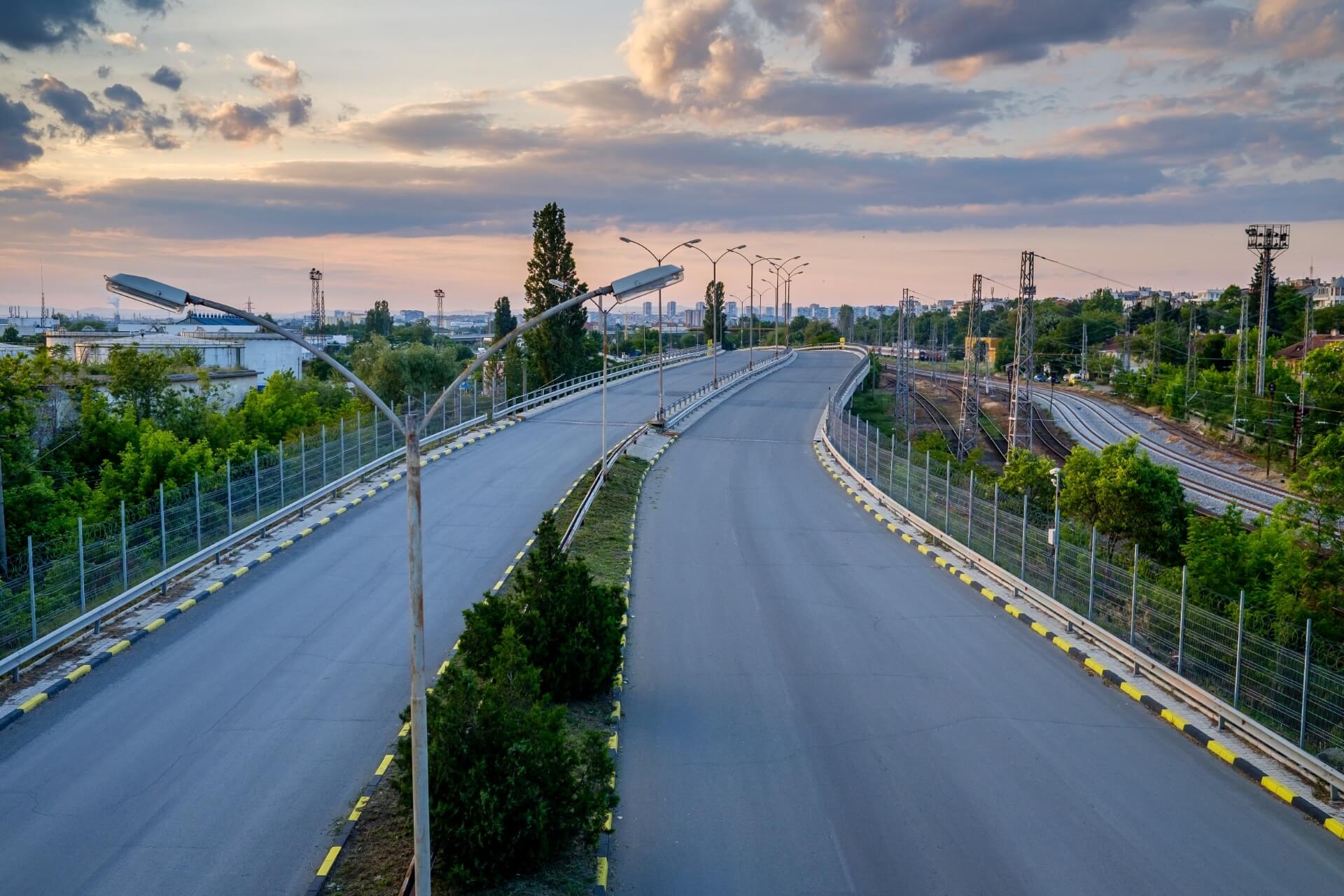
When cooperating with Localrent.com, car enthusiasts accept the rules that apply in Europe. The main conditions for using a rented car are:
- Tourists pay for fuel, parking, car wash, and fines themselves.
- Leaving the country only with the rental company’s consent.
- When returning the car, the fuel level in the tank should match the level at the time of receipt.
- Do not turn off the mobile phone and be reachable.
- In unforeseen circumstances, immediately call the rental company’s technical support and the Localrent.com aggregator, which are always ready to help.
Using the Car Outside the Country
Geographically, Bulgaria occupies a convenient position. Many tourists want to visit neighboring countries such as Turkey, Greece, Serbia, Romania, or Macedonia. To travel in a rented car, you need:
- Permission from the rental company (included in the contract)
- Car registration document
- International insurance (Green card)
- Additional payment for leaving the country may be required.
Actions When Returning the Car
Returning the car is as quick as receiving it. At the specified place and time, the client brings the fueled and washed car to the rental company representative. The manager inspects the vehicle, checks the fuel level, and, ensuring there are no damages, returns the deposit to the client.
Insurance Policies
According to international rules, all rented vehicles are insured under a basic program. The client has the right to purchase extended insurance depending on driving experience and the rental company’s pricing policy.
The following types of policies exist:
- CDW (Collision Damage Waiver): Similar to comprehensive insurance, covering car damages caused by the driver.
- TI (Theft Insurance): Car theft insurance.
- PAI (Personal Accident Insurance): Personal insurance for the driver.
- TPL (Third-Party Liability): Similar to compulsory motor third-party liability (OSAGO), covering only third-party vehicle damages.
Rental companies often include TPL or CDW in the rental cost. These policies do not cover damages to the undercarriage, tires, and windows, which are likely during mountain travel. It’s better to get full insurance that covers all expenses. An important aspect of insurance is the deductible amount, limiting the tourist’s liability.
Where to Go Inside the Country
The country is famous not only for its stunning seaside resorts but also for its picturesque mountain ranges, forest reserves, and beautiful valleys. This is a truly universal country where every tourist will find the desired type of rest. Visiting significant and popular attractions requires covering considerable distances. Interesting places are scattered throughout this unique Balkan country.
Cape Kaliakra
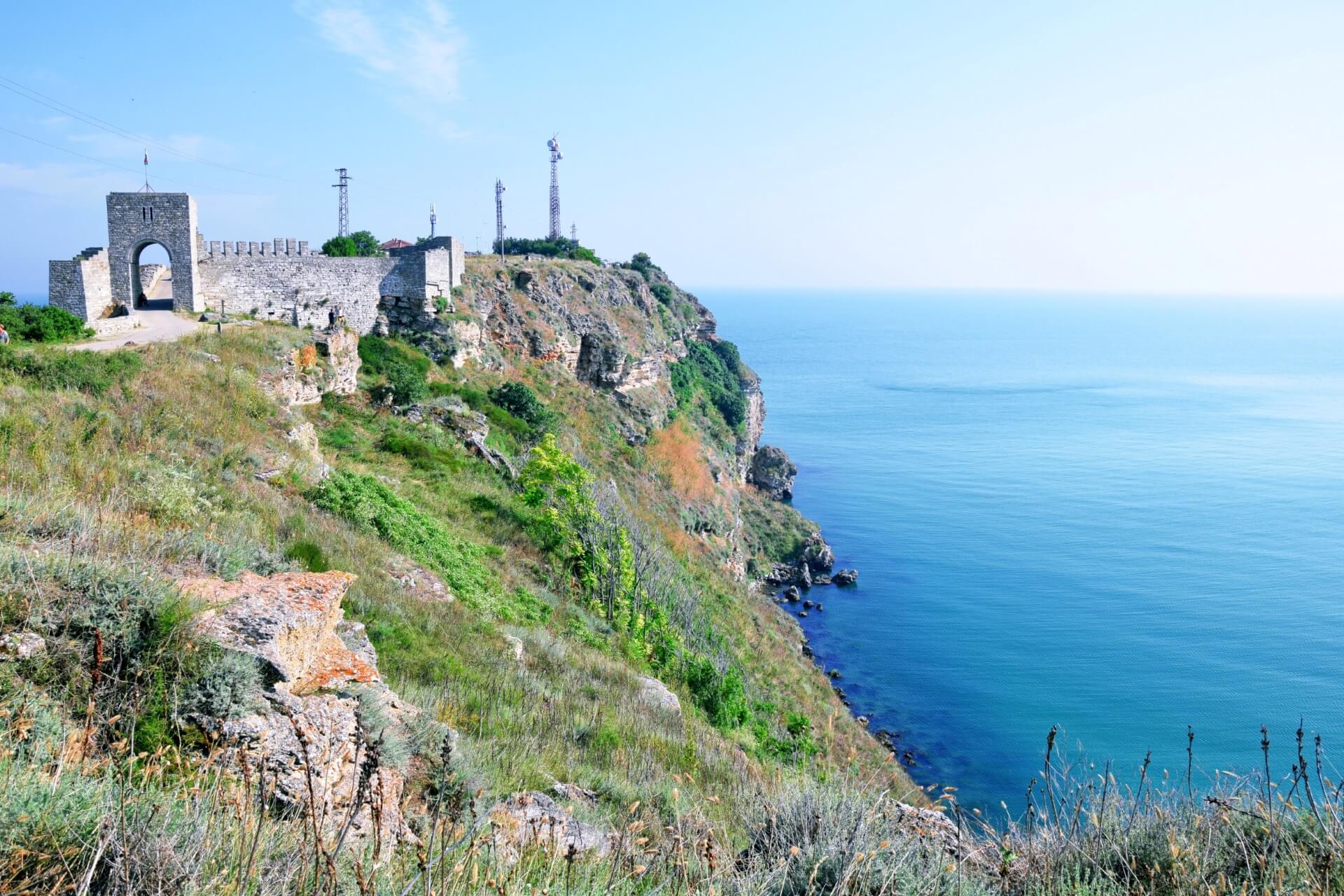
60 kilometers from Varna is one of the most beautiful and famous places — Cape Kaliakra. This two-kilometer narrow strip of cliffs extends into the sea, washed by the turquoise waters of the bay. The area is a nature reserve where flowers, shrubs, fruit trees grow, and cormorants nest. The height of the rocky cape reaches 70 meters above sea level. Here you can see the ruins of a medieval fortress, a lighthouse, the chapel of St. Nicholas, and a memorial complex dedicated to Admiral F. Ushakov.
Balchik
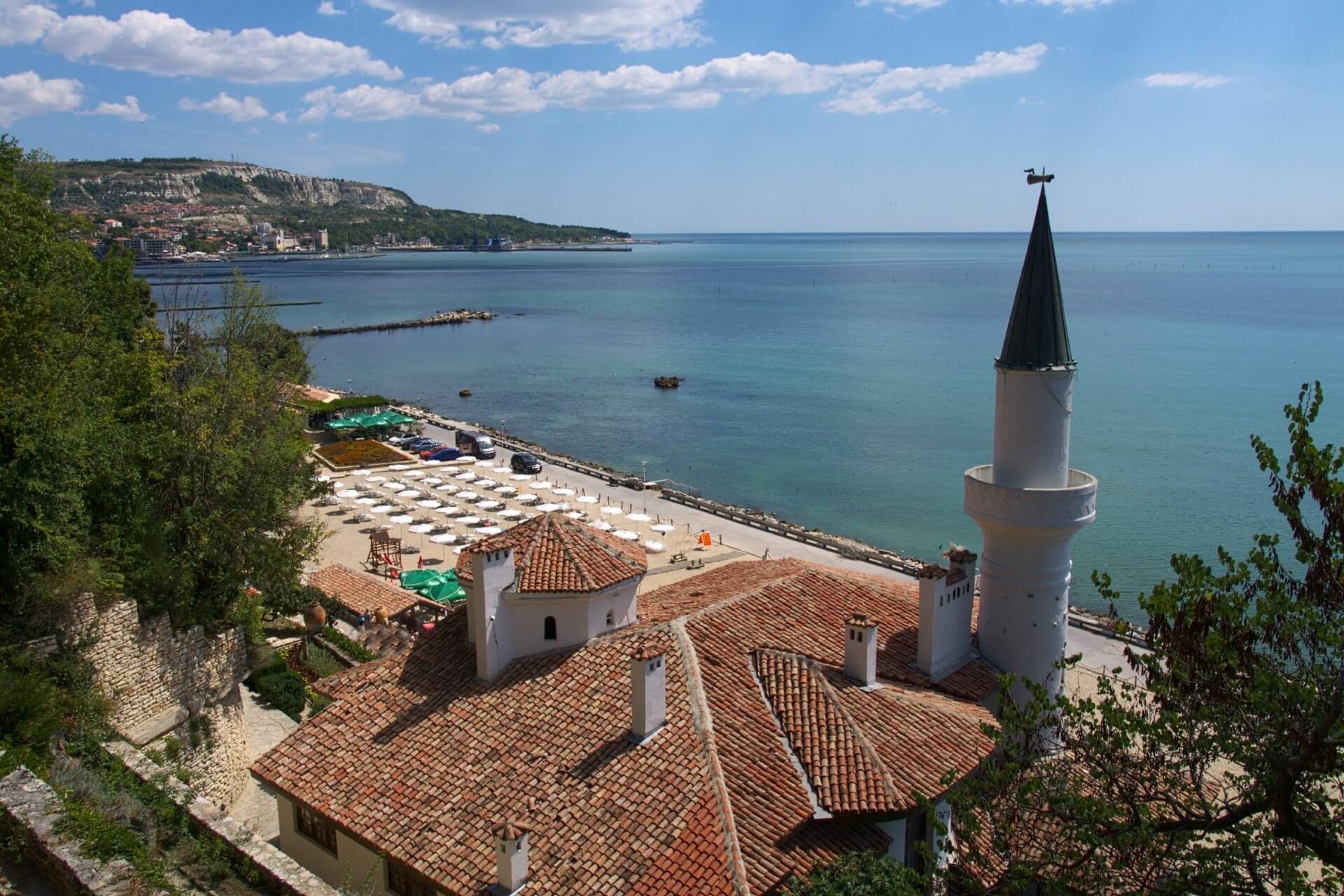
The quiet and cozy town of Balchik is located in a mountainous area, giving it special charm. Small winding streets lead to a wonderful promenade lined with restaurants and cafes. The main attraction of Balchik is the botanical garden, which houses about 3000 different plant species, including 250 types of cacti.
Madara Fortress
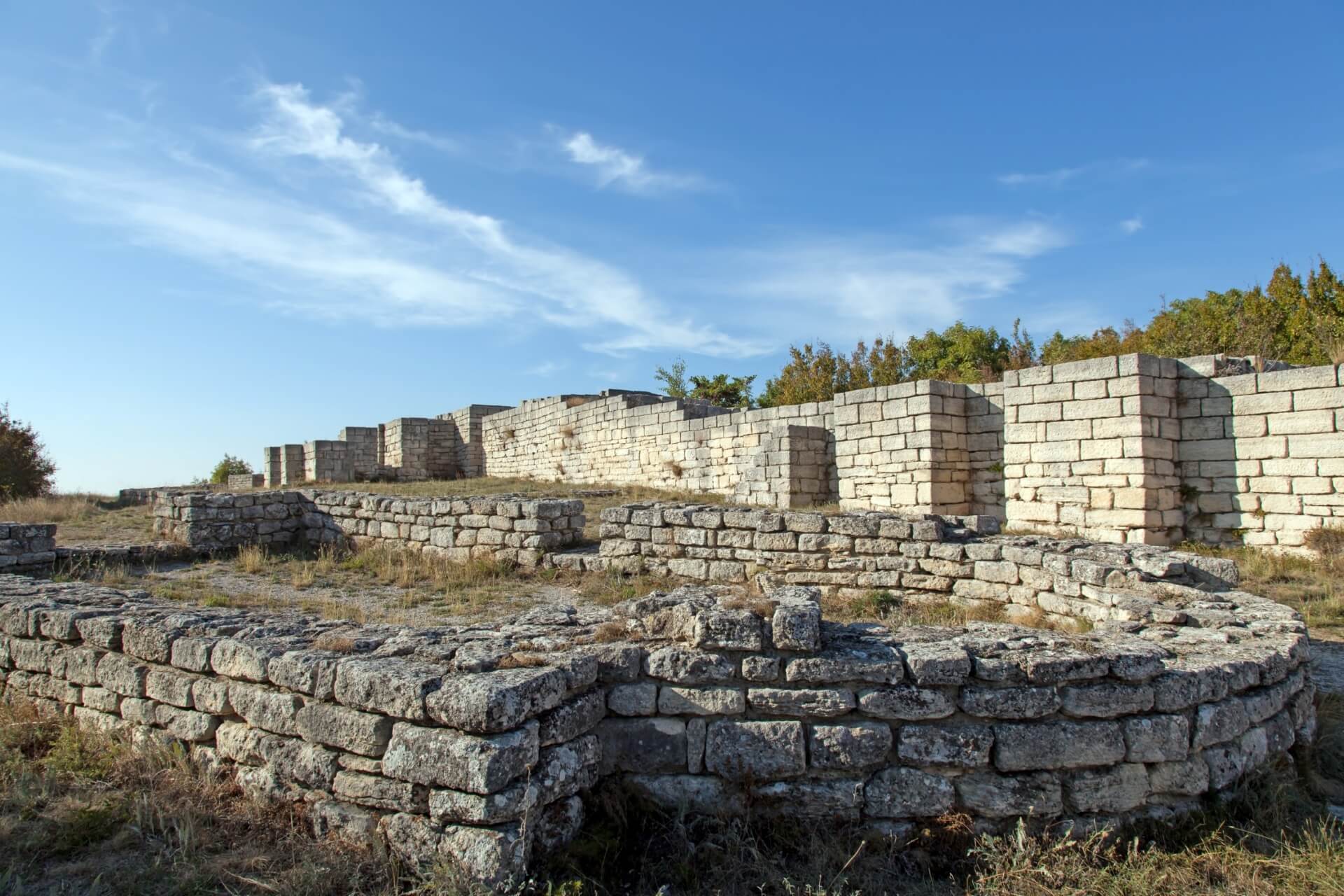
Madara Fortress is located 30 kilometers from the town of Shumen. The landmark is a complex of ancient ruins. The area attracts tourists with its picturesque views. Majestic rock formations are surrounded by evergreen forests. In the rocky cliff, there are small niches turning into cave holes where sunlight doesn’t reach. On the complex’s territory, you can find the remains of an 8th-century pool and water supply system. Carved into the rock is a bas-relief depicting a horseman with a spear — the Madara Rider, included in the UNESCO list. 386 steps lead to the plateau top where Madara Fortress once stood.
Ovech Fortress
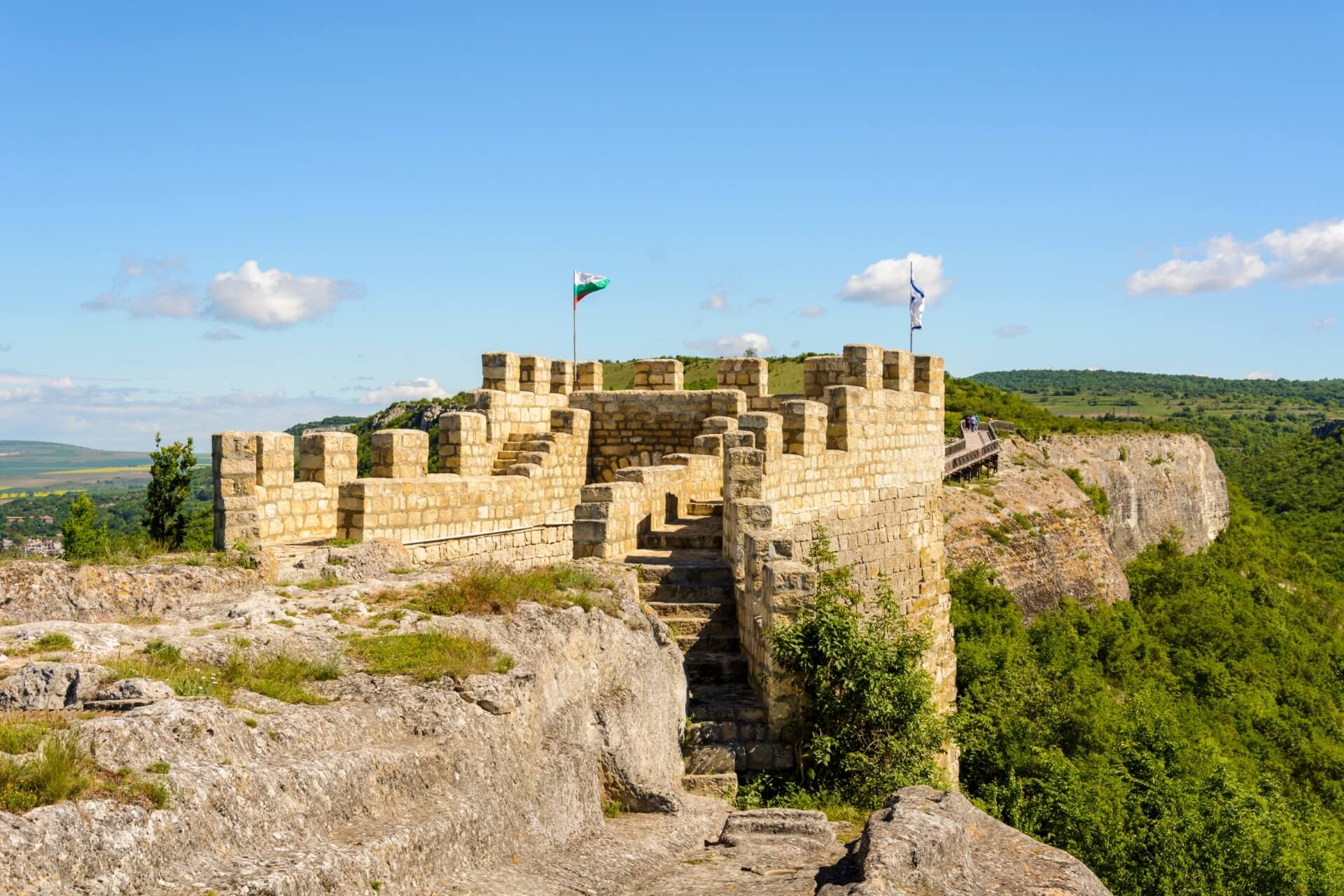
Tourists staying in Varna can easily visit the lesser-known but no less glorious place — Ovech Fortress. The landmark is located 50 kilometers from the resort. The fortress structure, from which only the gates and part of the wall have been preserved, was built by the Byzantines in the 4th century on top of a hill. A long wooden bridge 300 meters long leads to the citadel.
Veliko Tarnovo (Tsarevets Fortress)
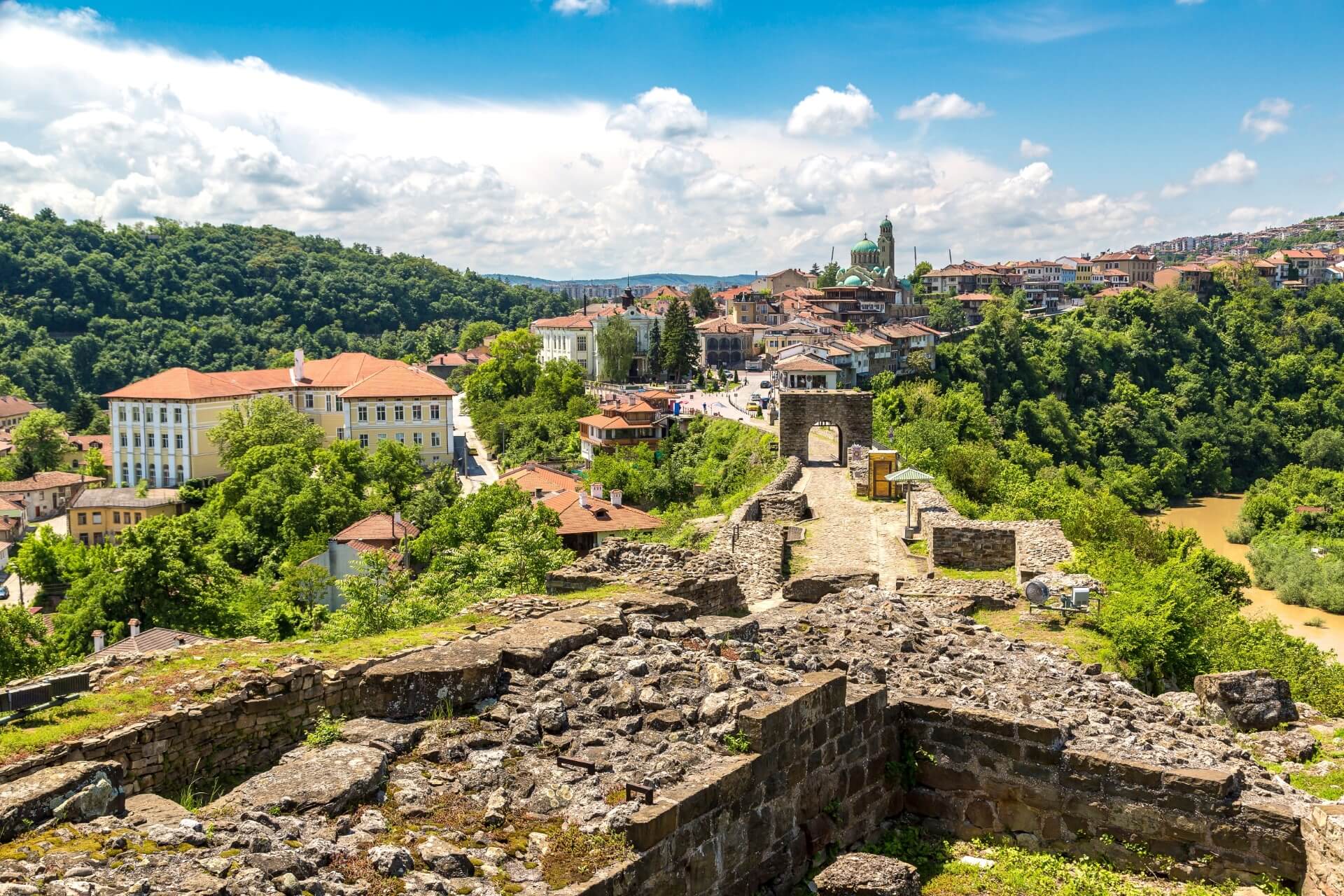
One of the most beautiful and unique cities in the Balkans is Veliko Tarnovo. The first capital of Bulgaria is a cultural, historical, and religious center of the country. The winding course of the full-flowing Yantra River surrounds the three hills on which Veliko Tarnovo stands. The city is famous for its ancient architectural buildings, which coexist with small houses. The remains of the Tsarevets palace complex and the restored Church of the Ascension of the Lord, whose interior is decorated with unique colorful frescoes based on Bulgarian history, deserve attention.
Arbanasi Village

A few kilometers from Veliko Tarnovo is the village of Arbanasi, consisting of ancient houses, churches, and monasteries. The buildings are recognized as national architectural monuments. This is a kind of ethnographic museum showing the life of local residents since the early 17th century. Walking through the well-maintained territory of the village, you can see interesting stone houses of bizarre architectural forms and several religious shrines with reproductions of miraculous icons.
Shipka
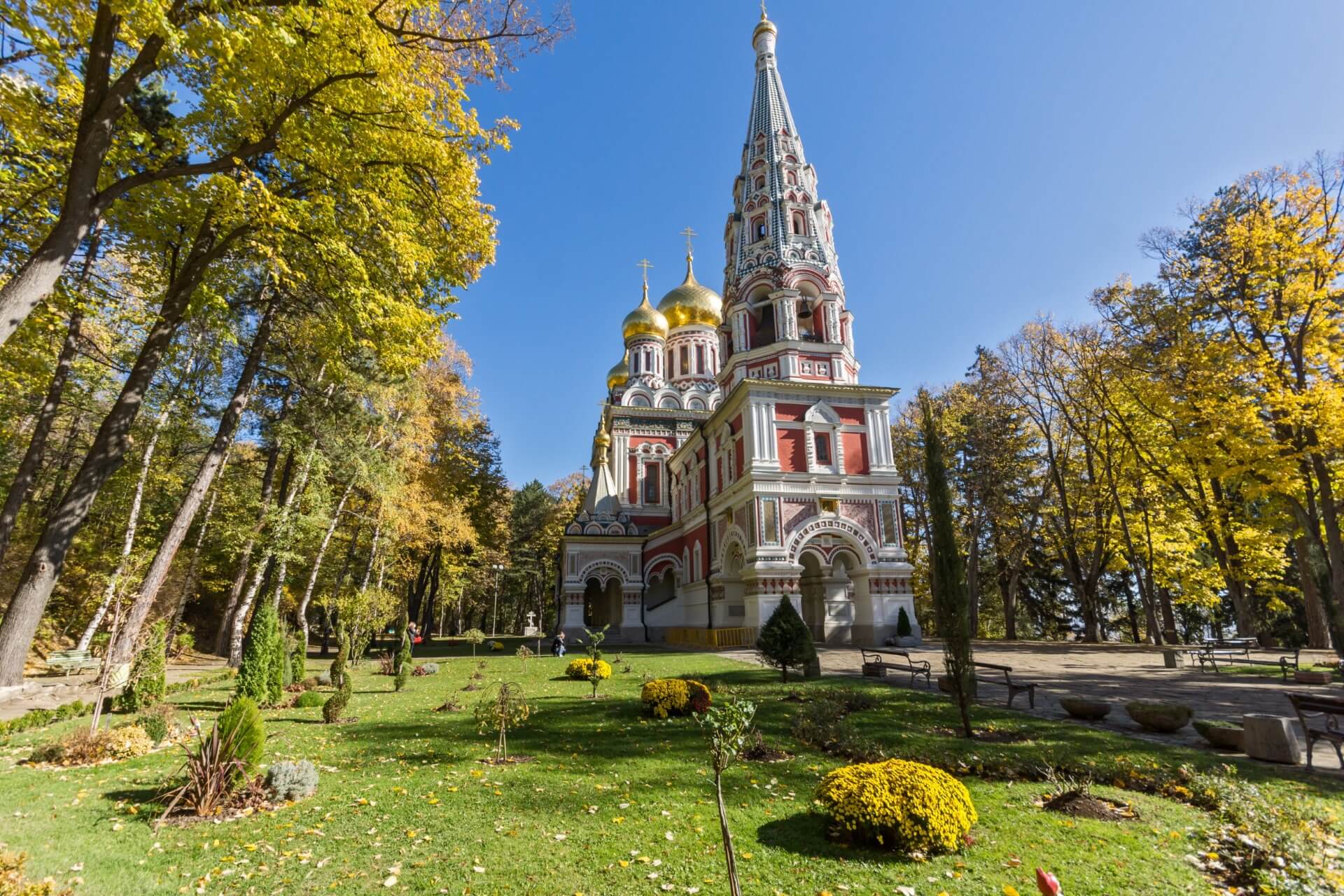
Shipka is a mountain peak where a memorial monument is erected in honor of the Russian army, which liberated Bulgaria from Ottoman oppression. This is a historic and significant place. Fierce battles took place here during the Russo-Turkish War of 1877. At the mountain’s peak stands a stone tower, inside which is a sarcophagus with the remains of fallen soldiers. Nearby are artillery guns and an eternal flame. A panoramic view of the valleys opens from the observation deck.
Plovdiv. Amphitheater
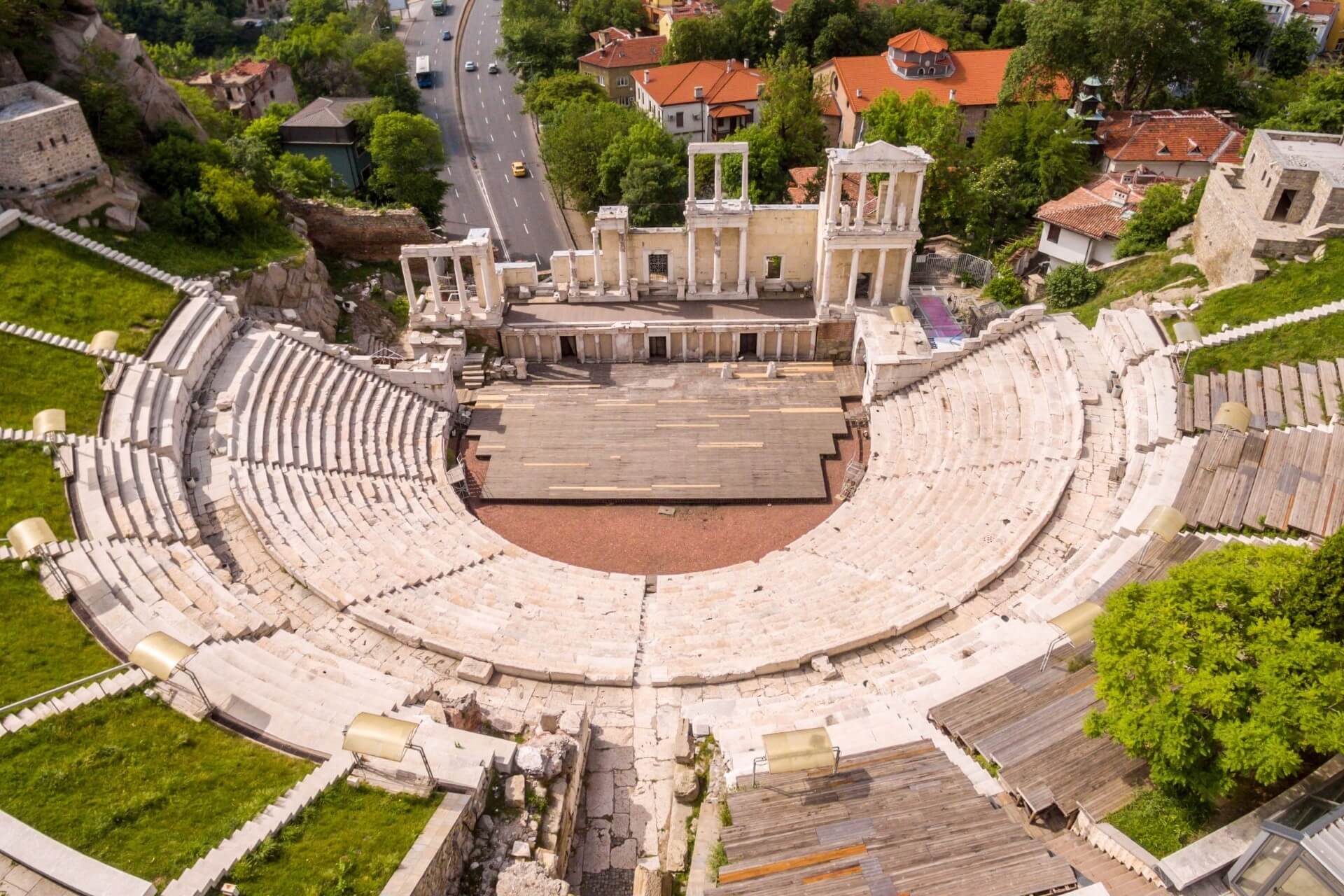
You can get impressions of ancient architecture in the city of Plovdiv. Here are several ruins of the ancient Roman era and the famous monument to the liberator soldier Alyosha. The main attraction of Plovdiv is the Roman amphitheater, built in the second century AD. This is one of the best-preserved ancient structures in Europe. The city has many ancient churches and sculptural works.
Devil’s Throat Cave (Rhodope Mountains)
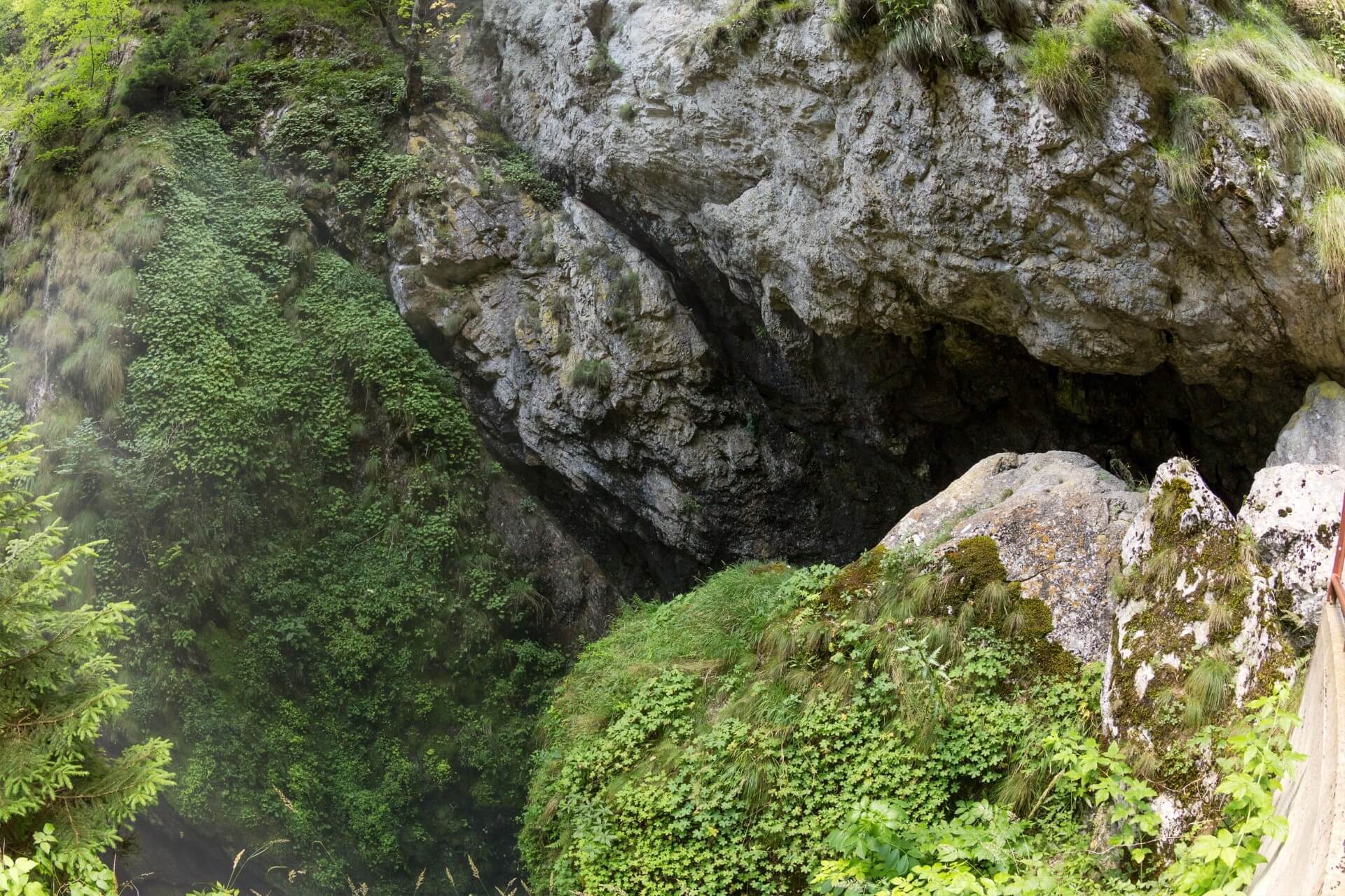
Lovers of cave walks should visit a place with the “romantic” name — “Devil’s Throat.” A picturesque path leads to the cave. Around are silence, high cliffs, and ancient pines. Tourists will find a huge underground hall with a 42-meter-high waterfall in the center. The turbulent water flow goes into a black abyss, leaving clouds of steam. The natural entrance to the cave is a narrow staircase with 300 steps. The cold cave and the terrifying roar of the water flow will leave vivid impressions for strong-spirited travelers.
Rila Lakes
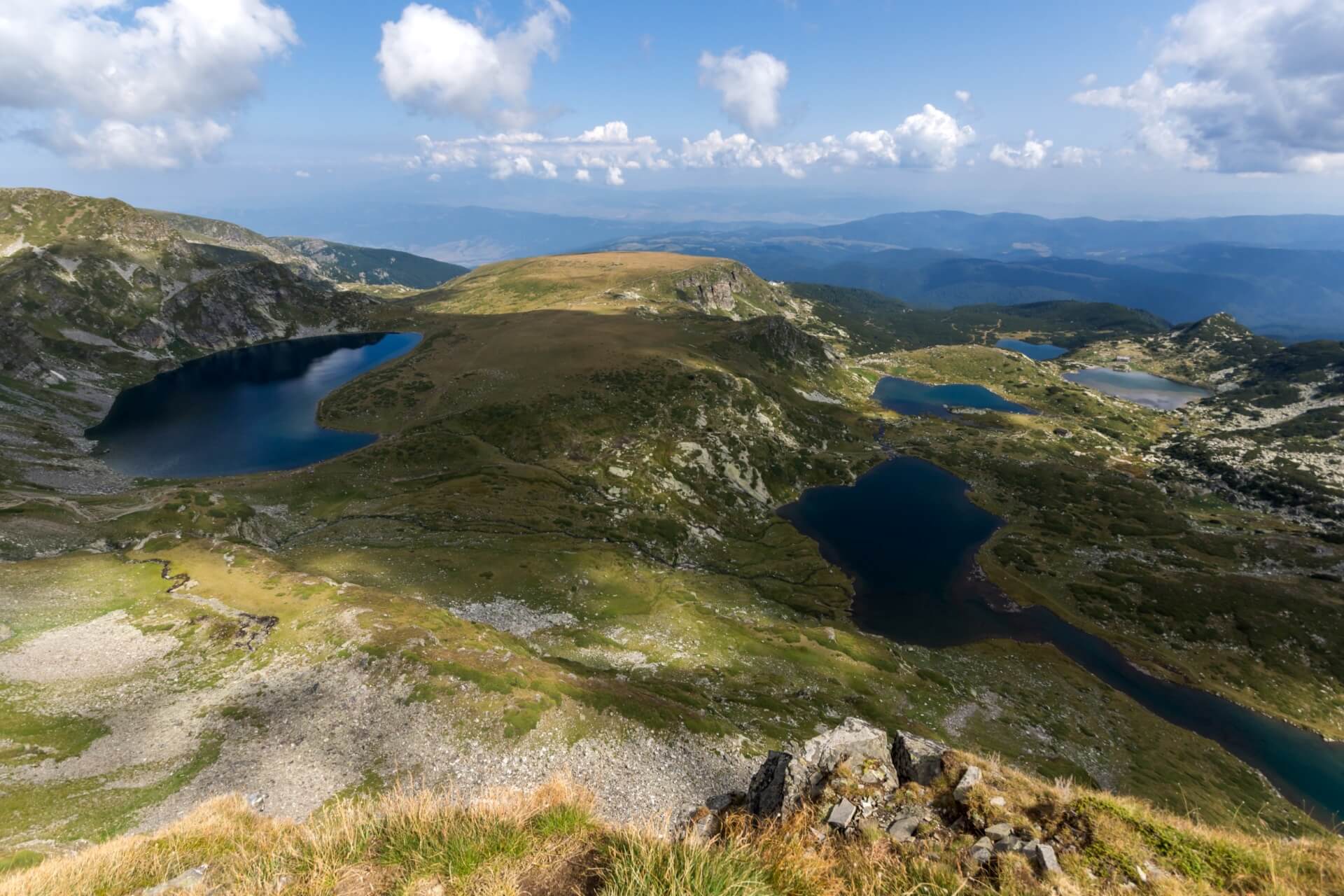
The pearl of the central part of the country is the Rila mountain range. This is one of the main natural attractions of the country. Majestic mountains are covered with dense forests, above which are alpine meadows, and snow-capped peaks are visible in the distance. Glaciers feed seven small lakes located at different levels from 2100 m to 2500 m above sea level. You can reach them first by cable car and then on foot.
Melnik
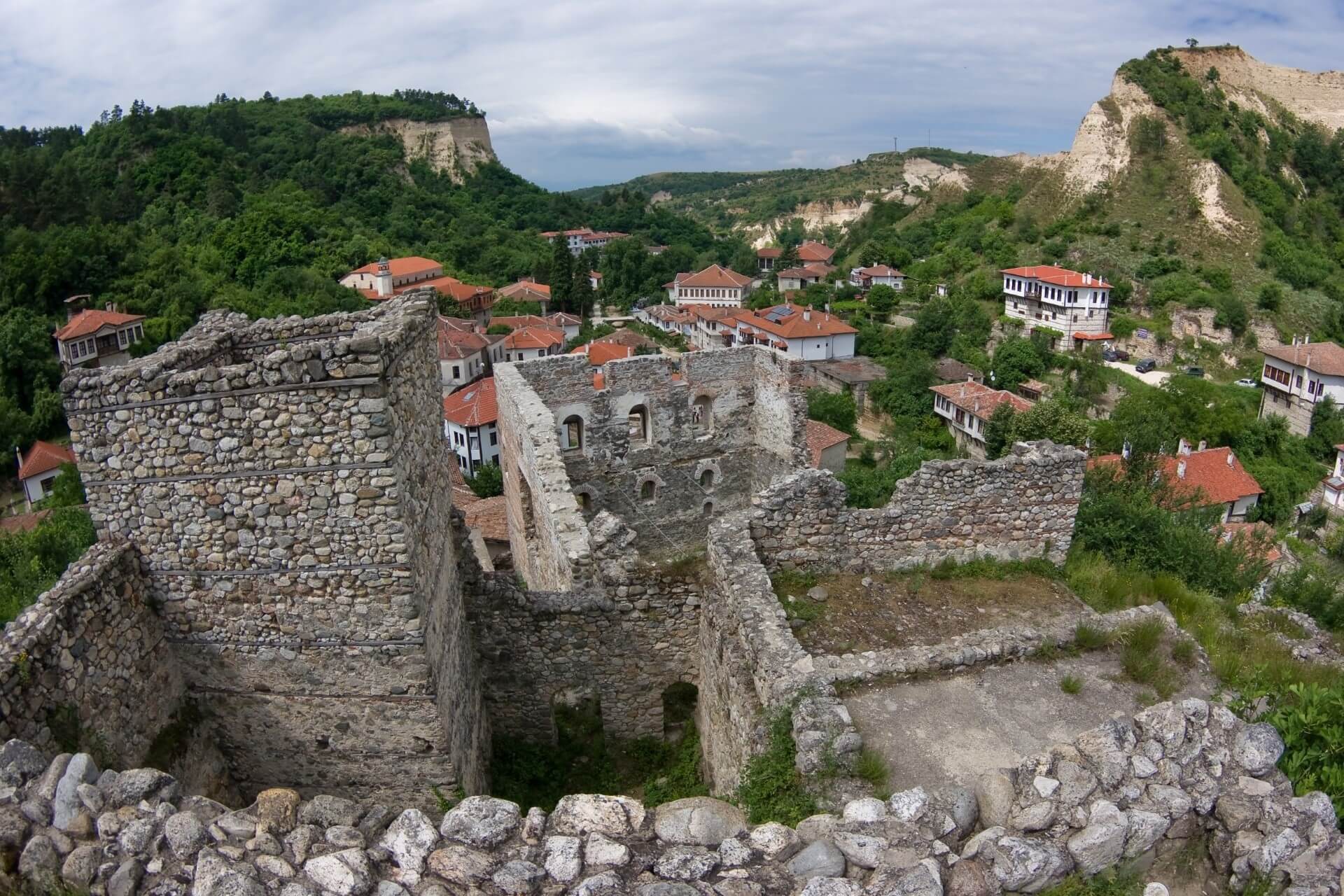
The unique town of Melnik will surely charm travelers. This is the smallest settlement with a population of over 300 people. The surrounding area is surrounded by chalky cliffs of bizarre shapes. In the town, you can see about 90 cultural monuments, including the ruins of basilicas and monasteries from the 12th century, a Turkish bath, and ancient houses of merchants and winemakers. Be sure to taste local fig jam and try wine aged in cave cellars.
Where to Go Outside the Country
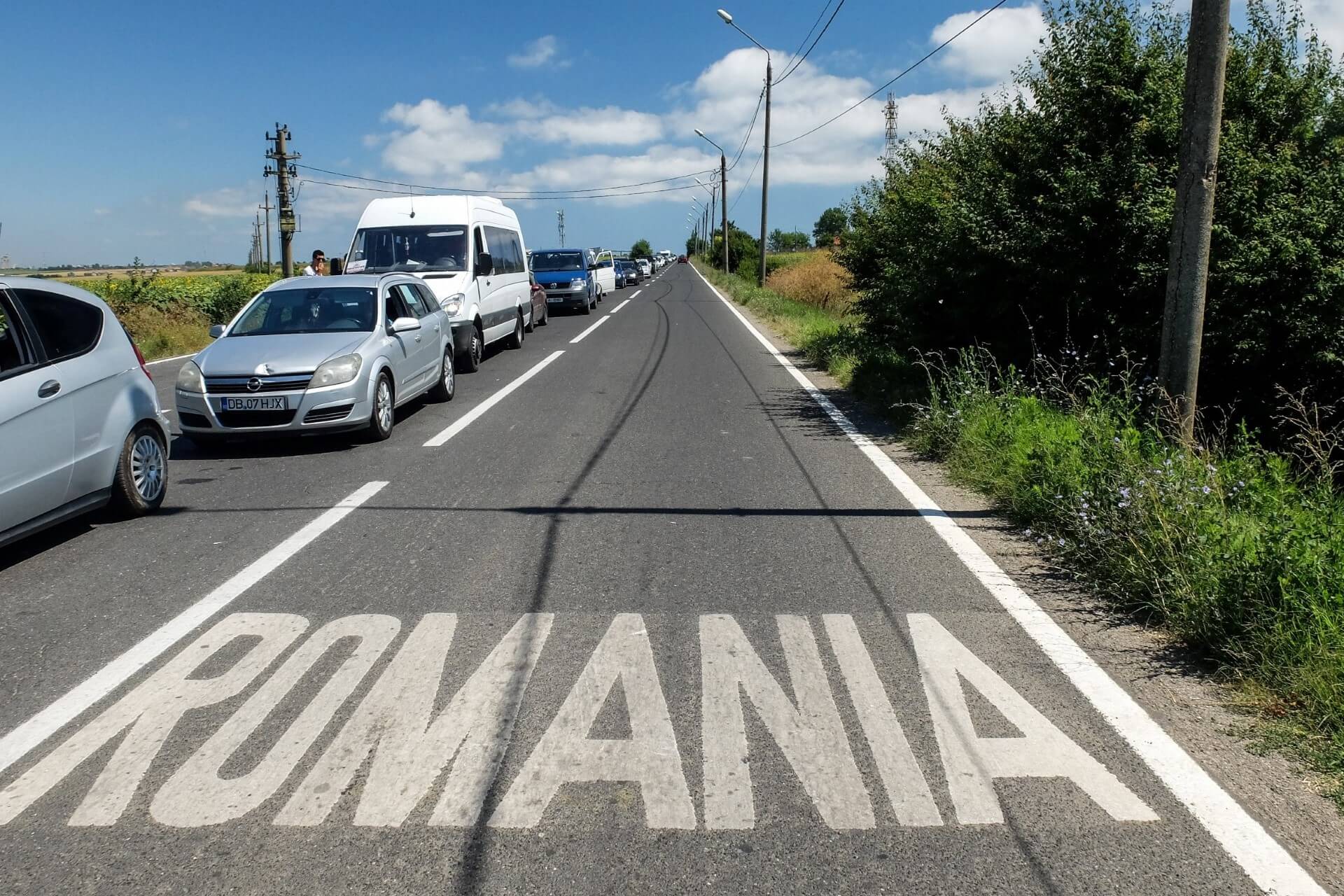
If tourists want to continue their vacation not only in Bulgaria, they can go to neighboring countries. With a car at their disposal, this is quite feasible. Bulgaria borders Turkey, Romania, Greece, Serbia, and Macedonia. Each of these countries has beautiful natural landscapes, interesting history, unique architecture, and tourist attractions.

